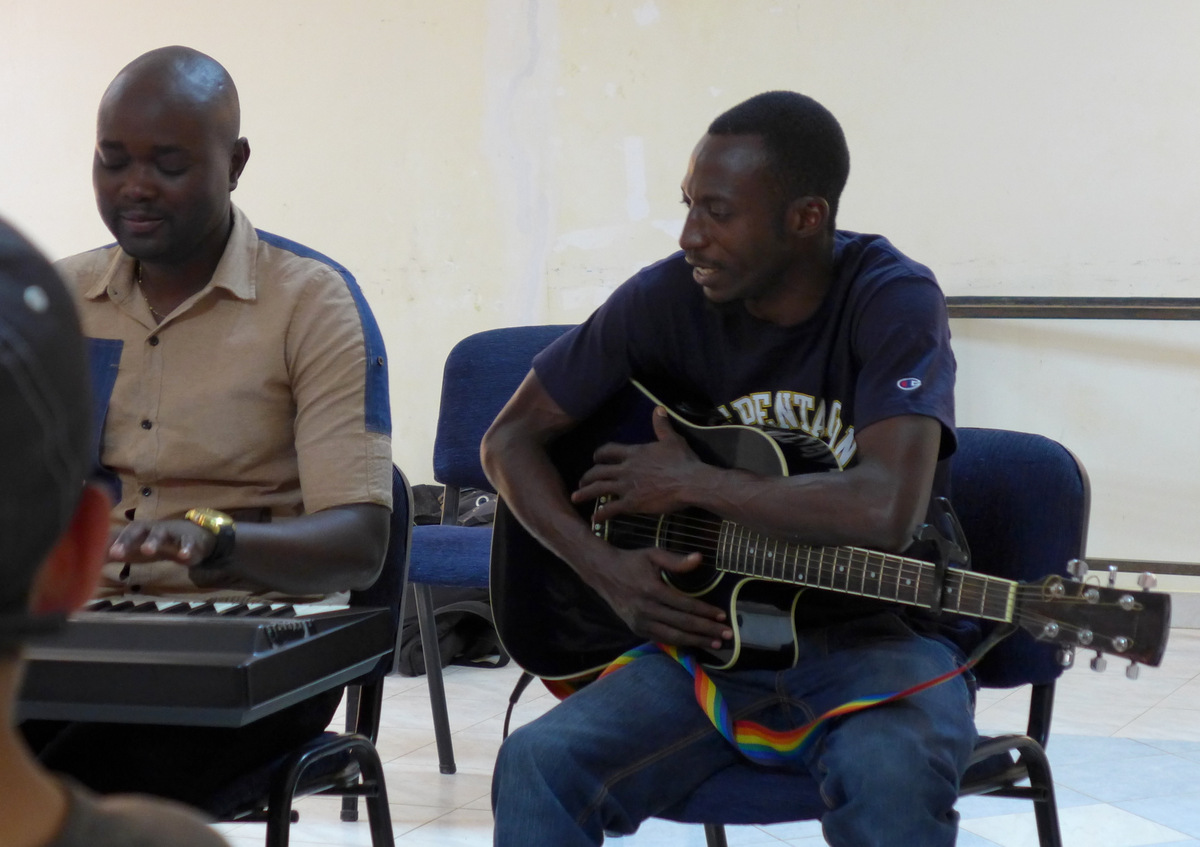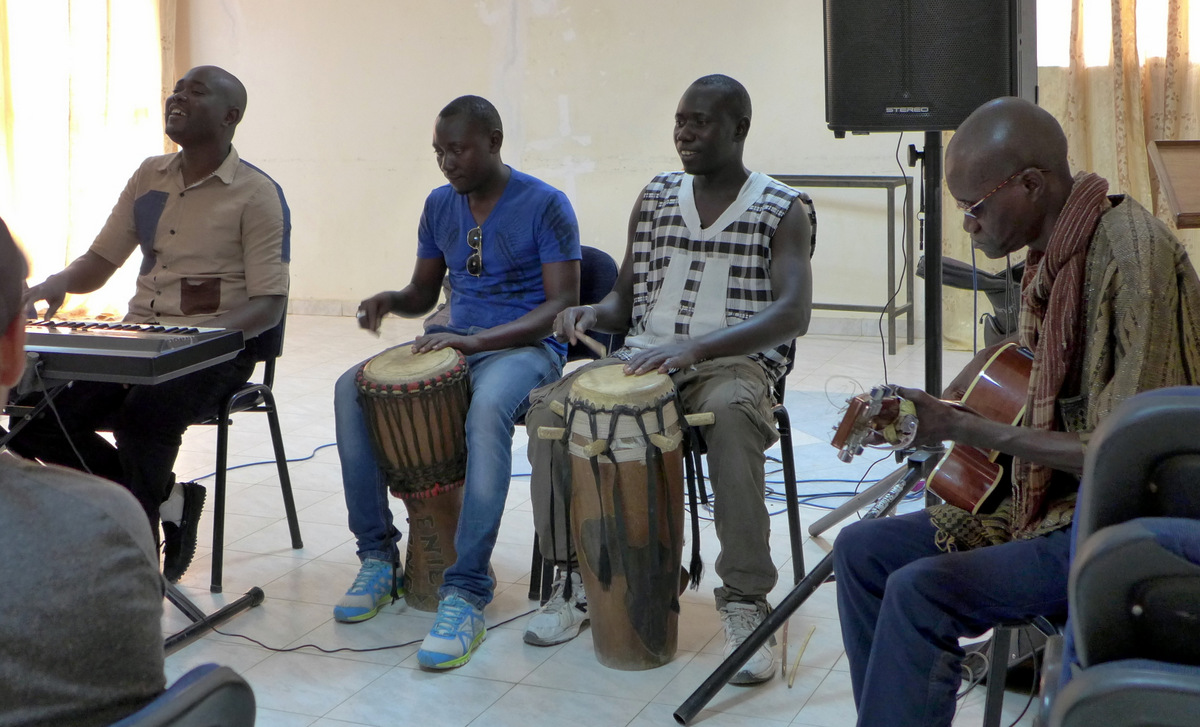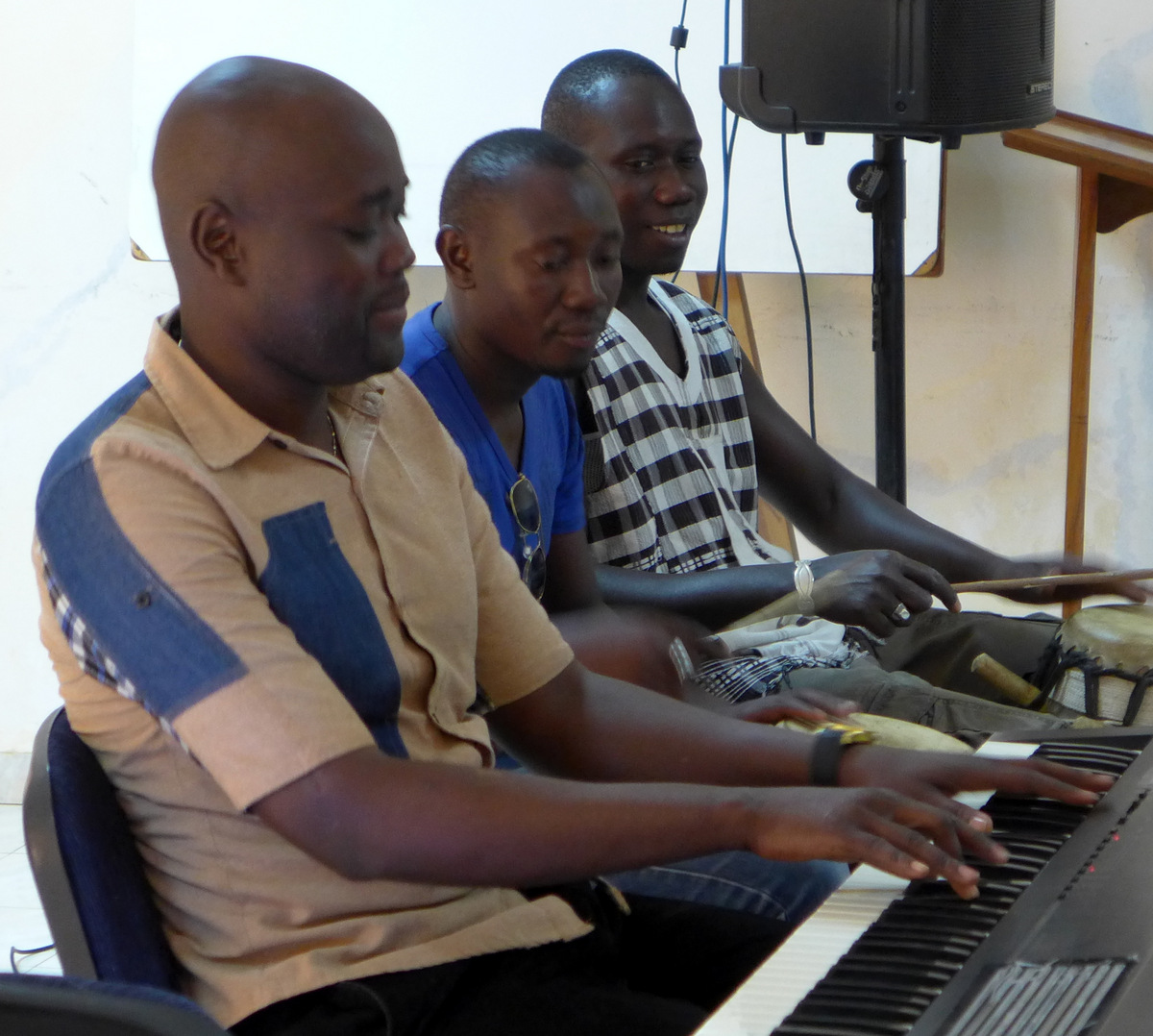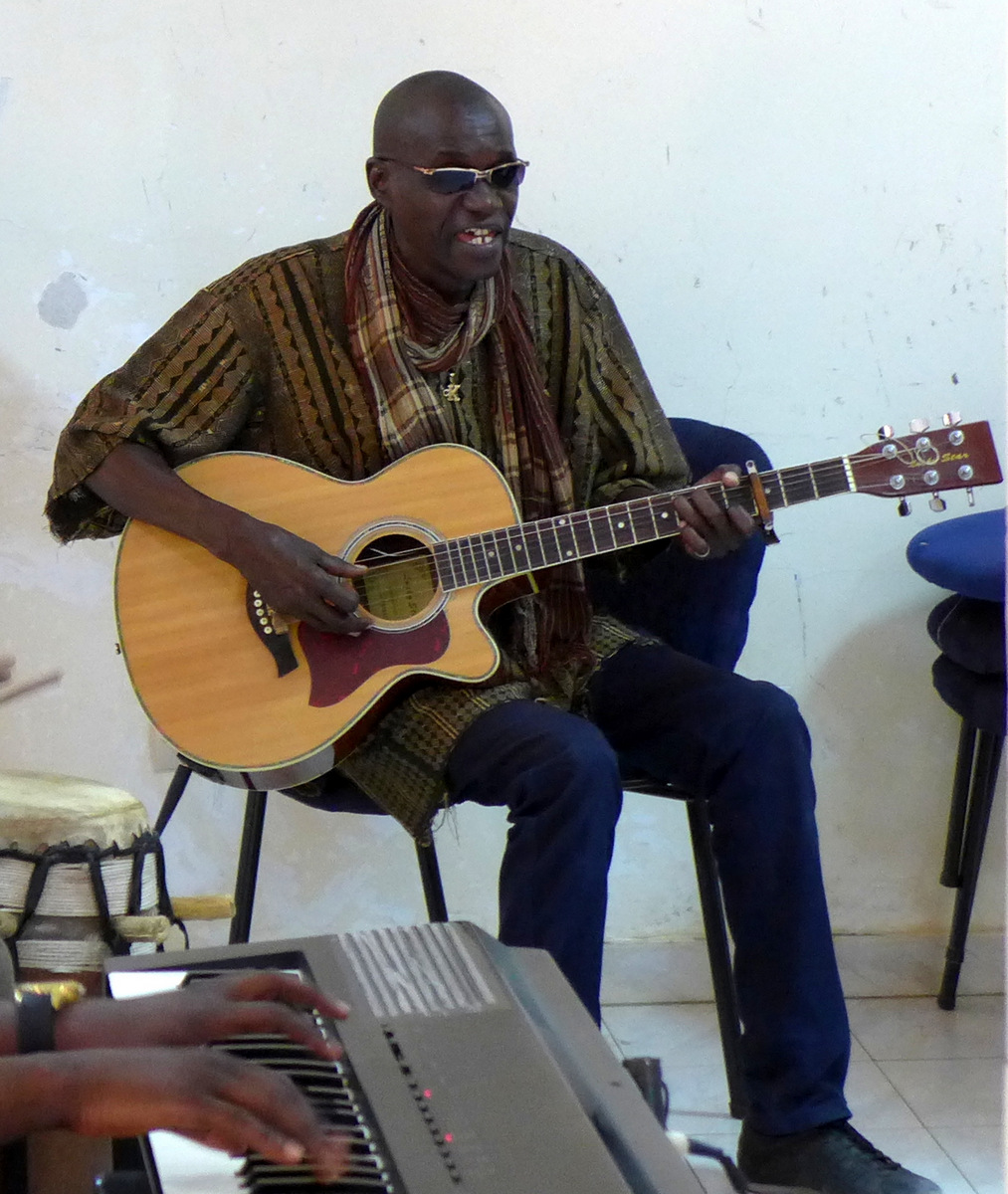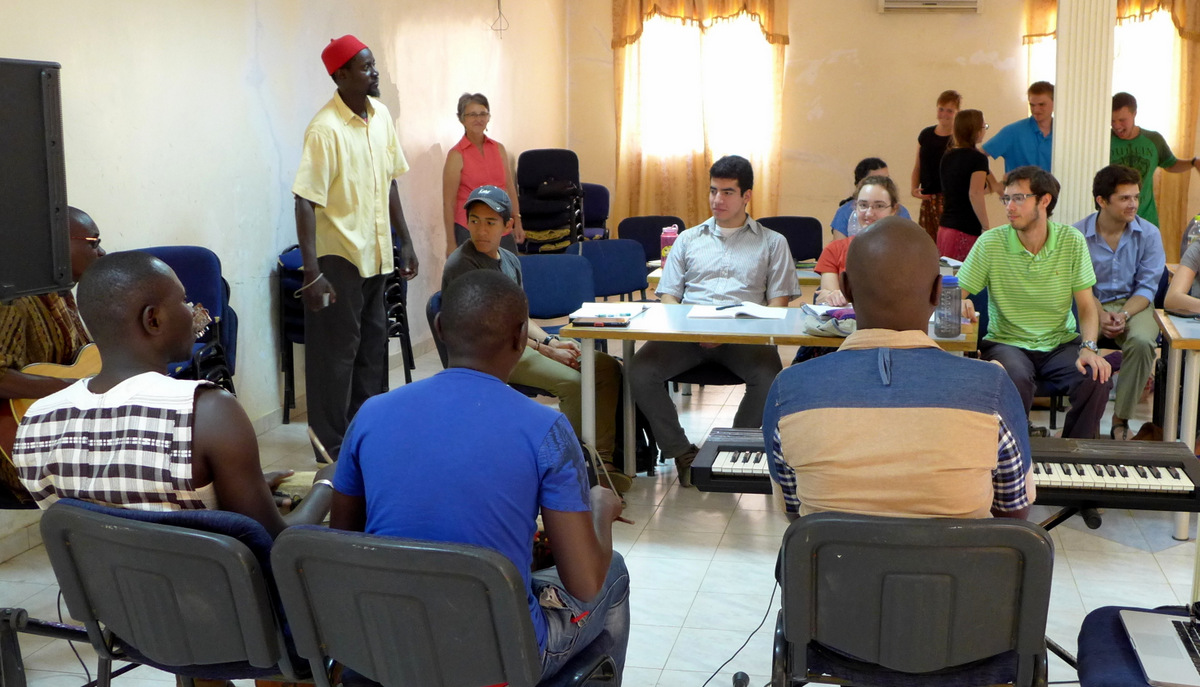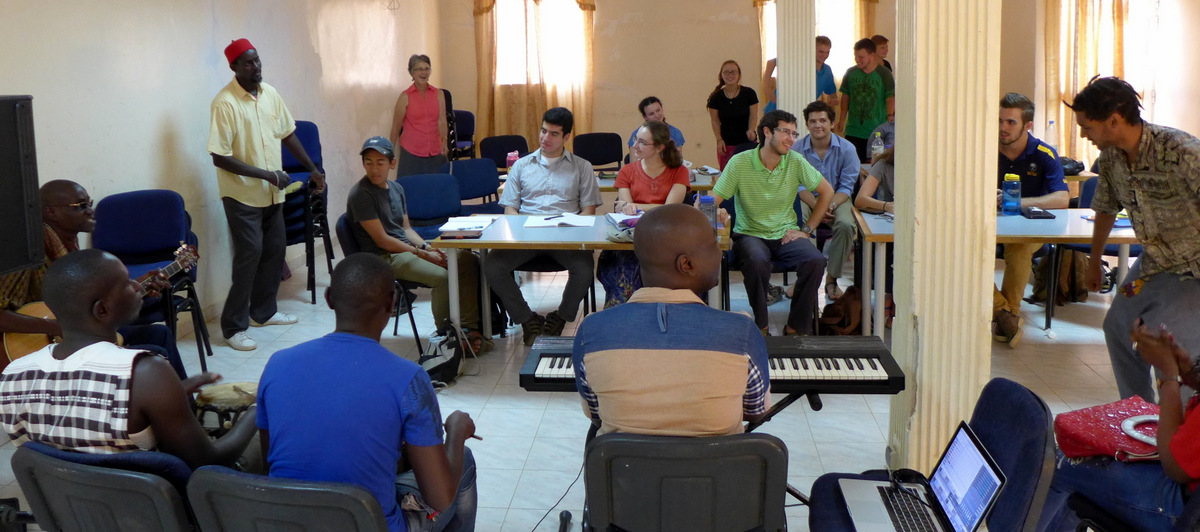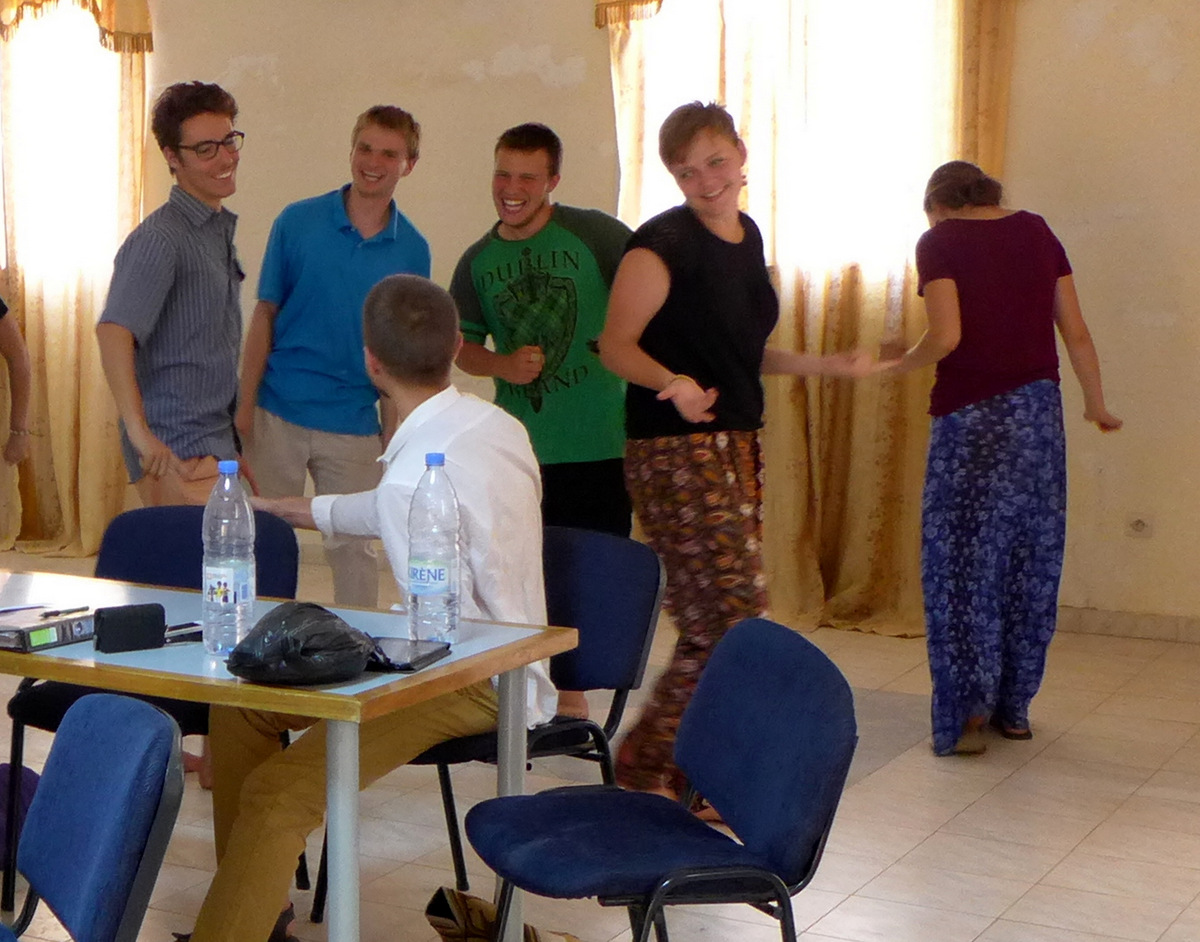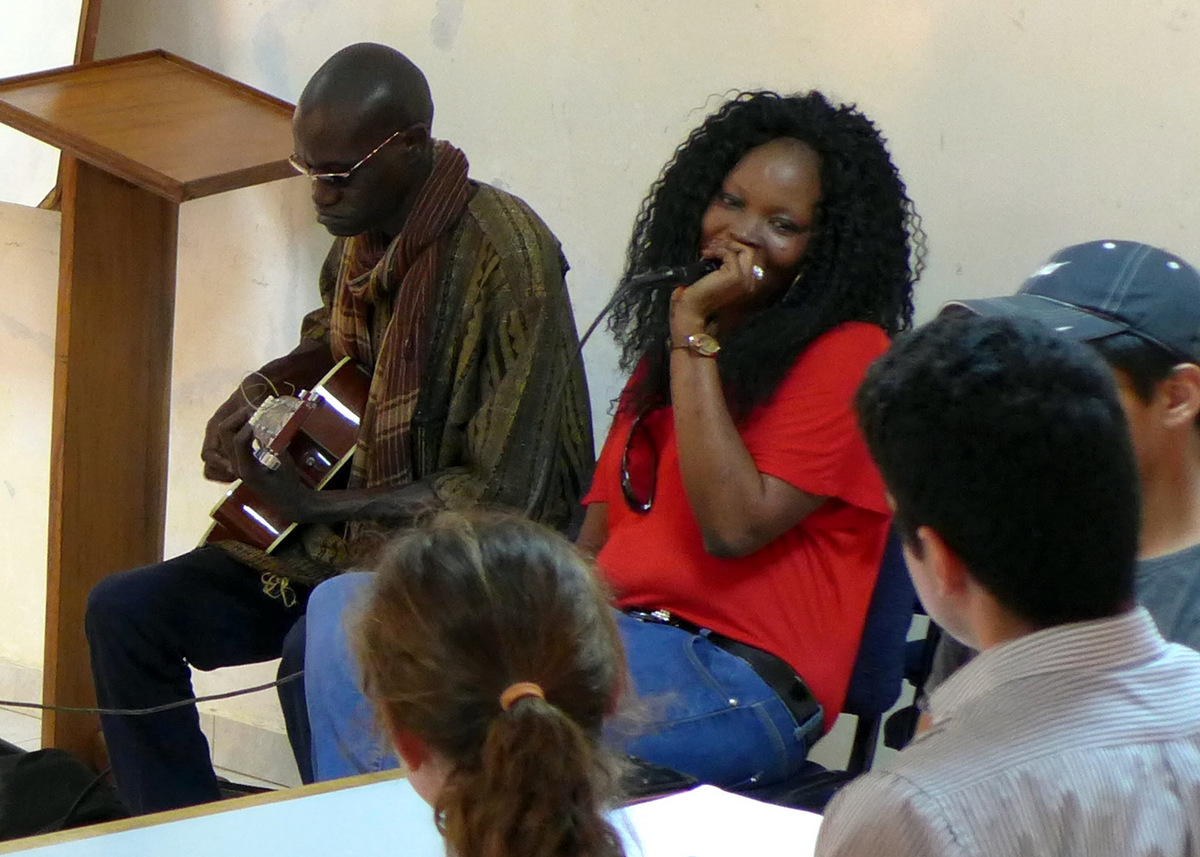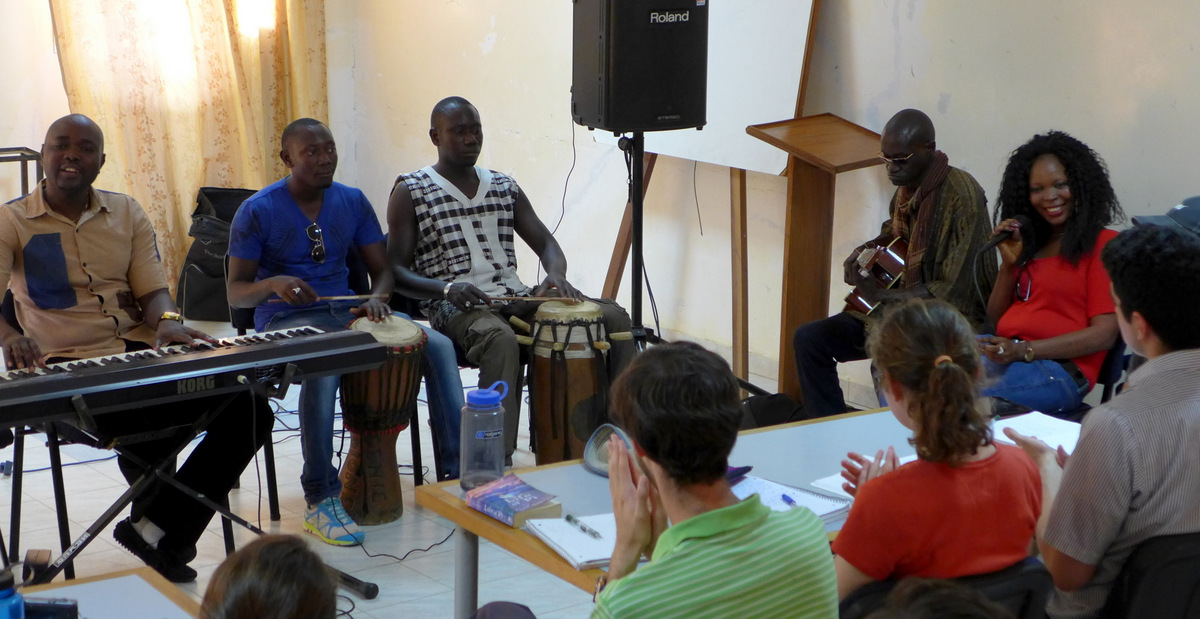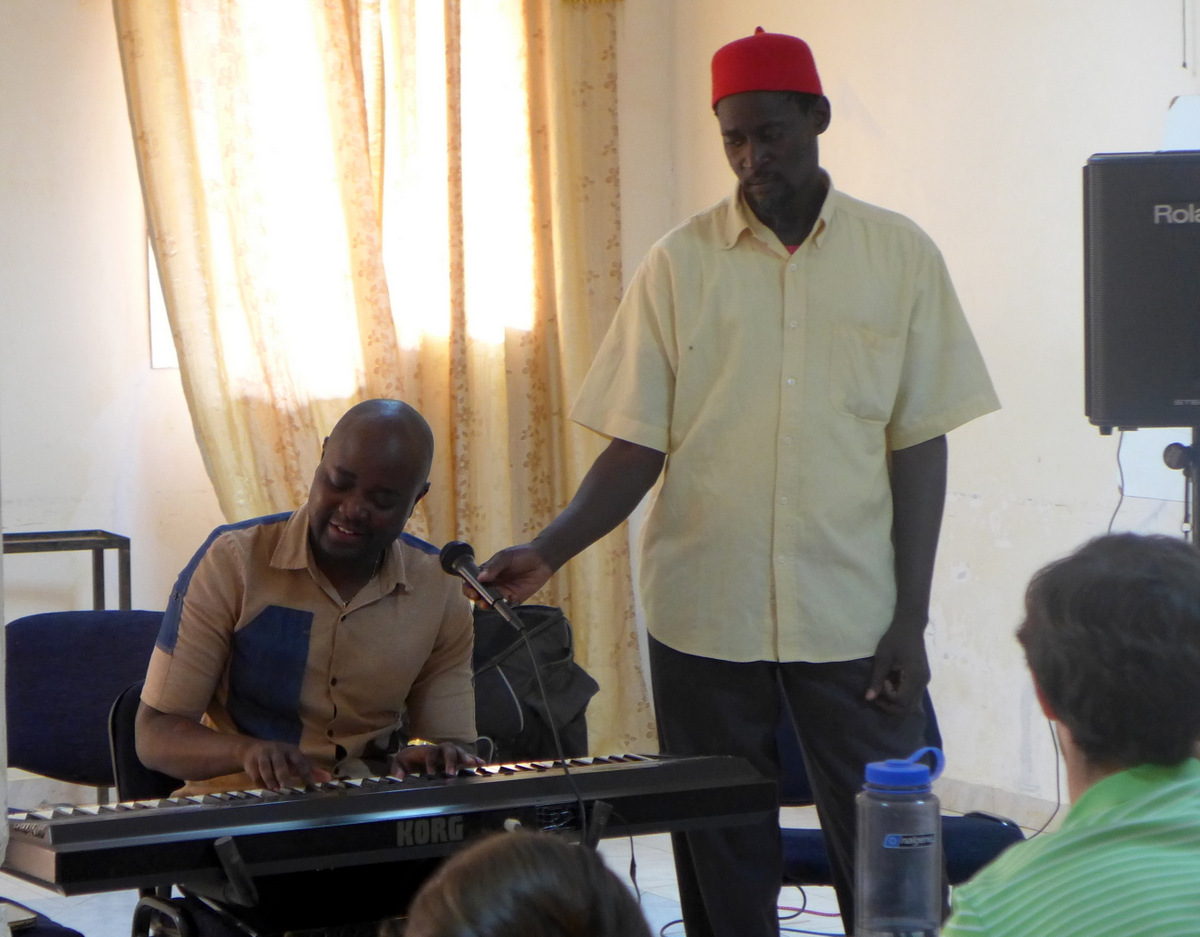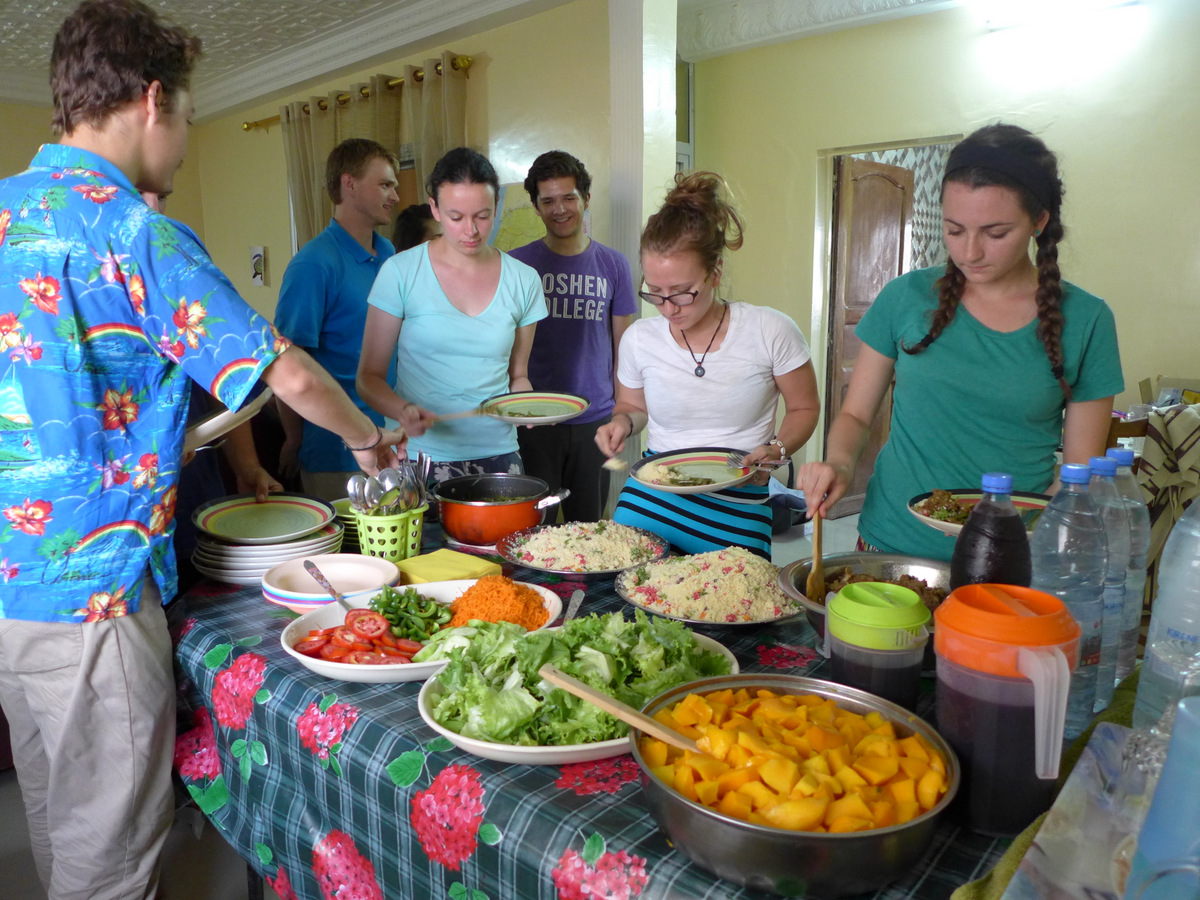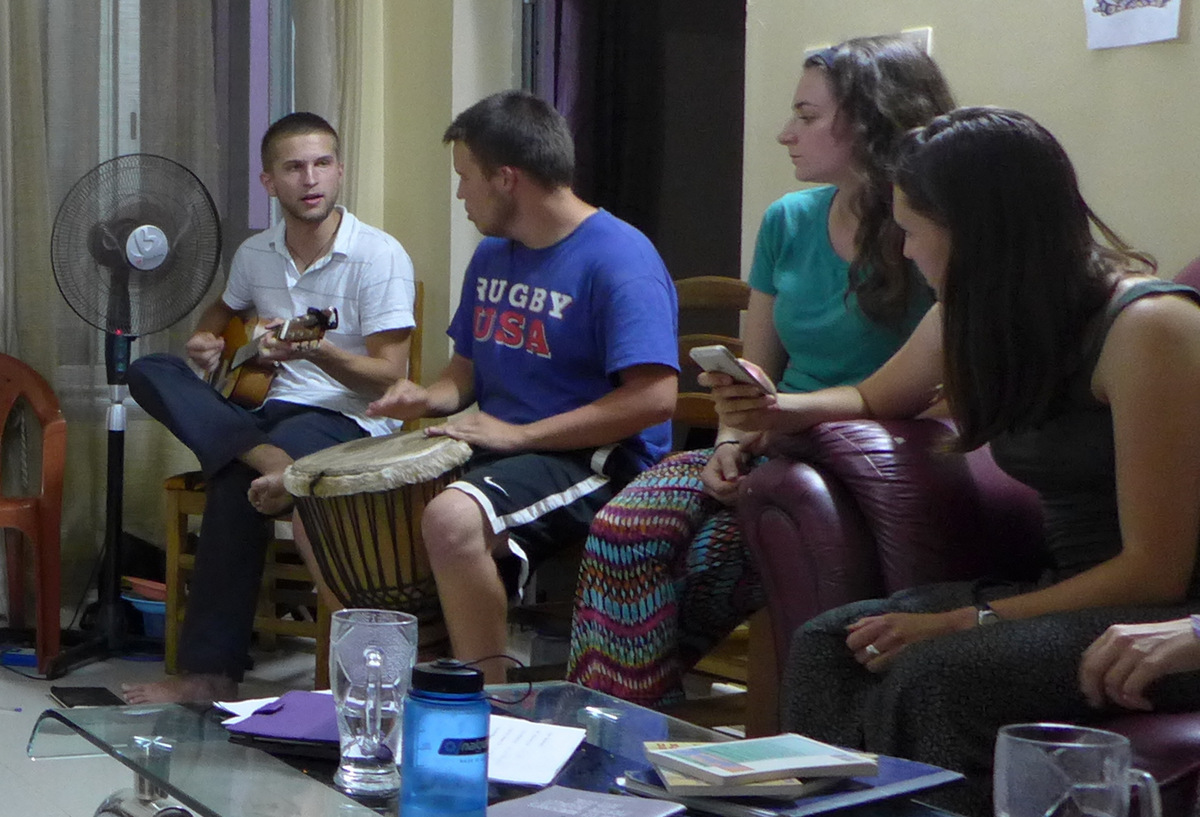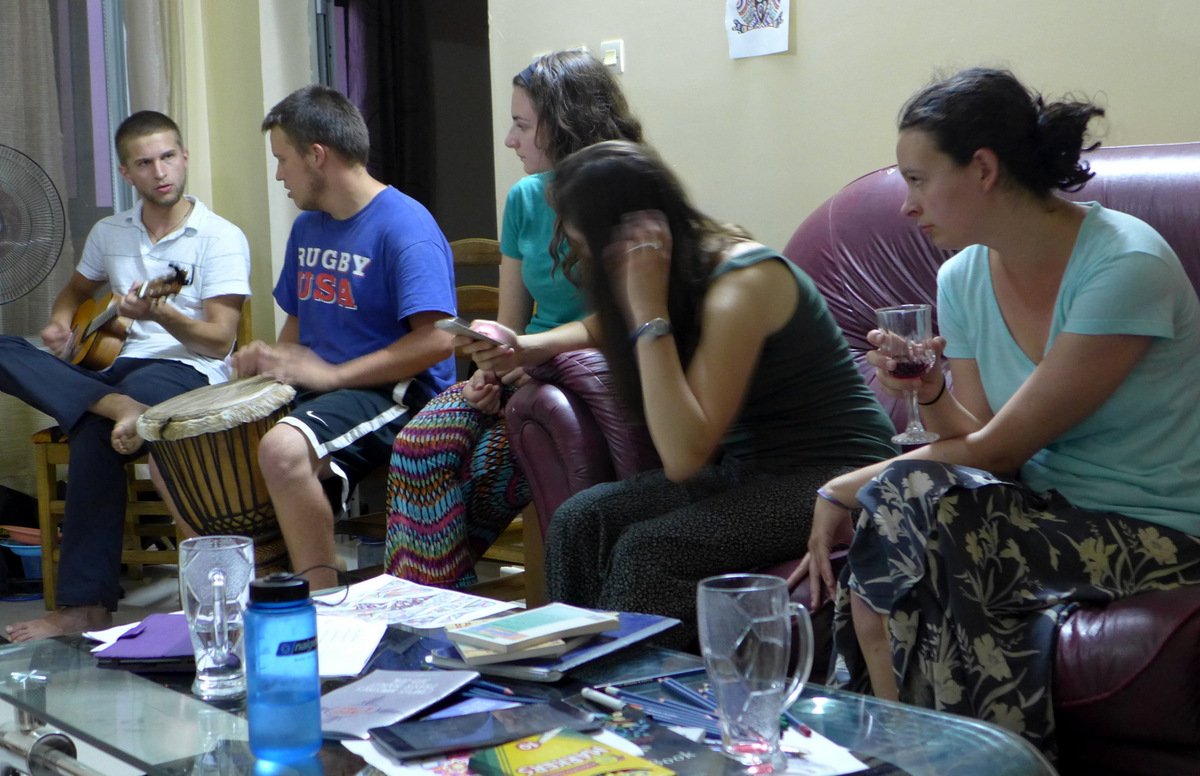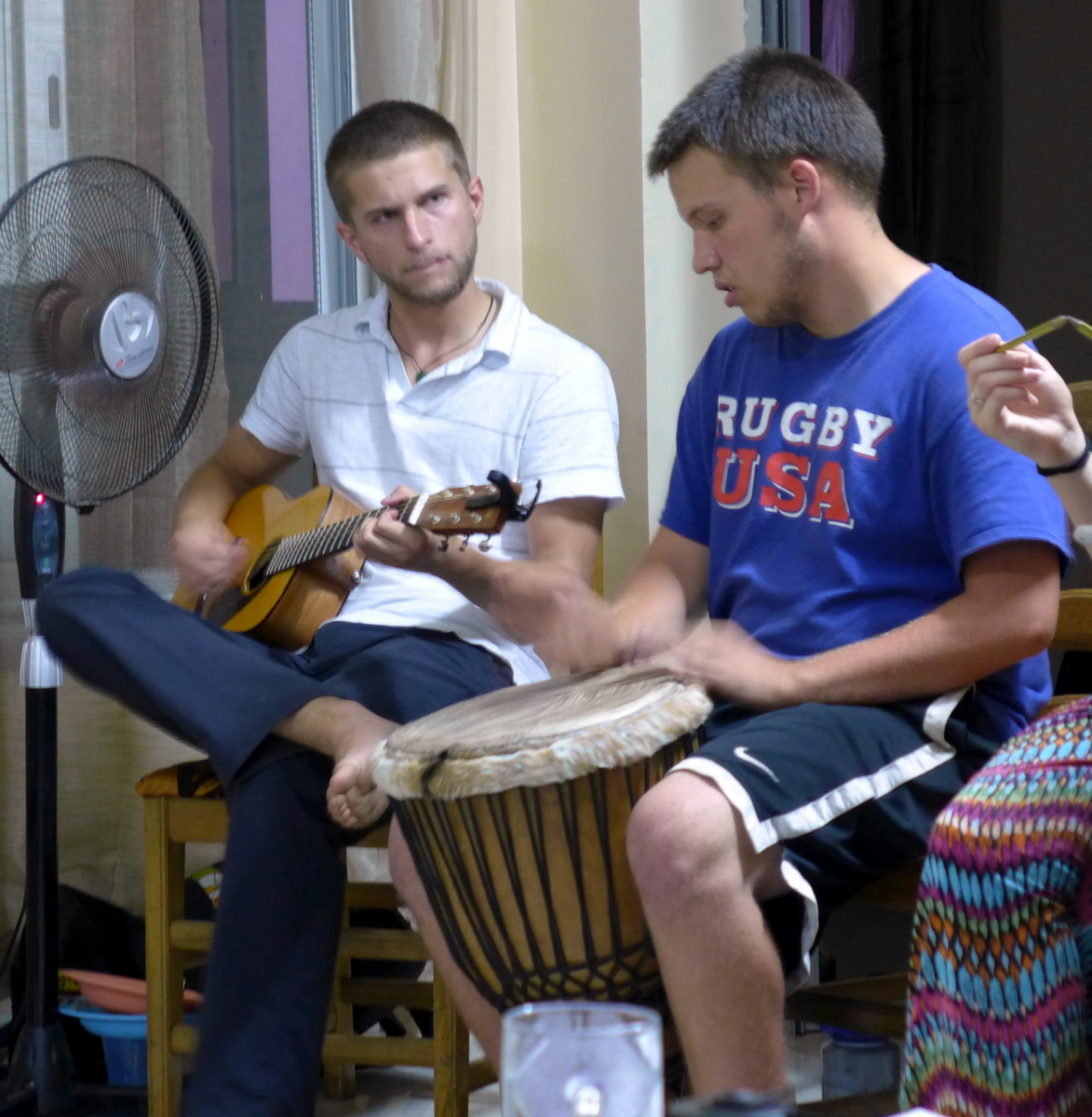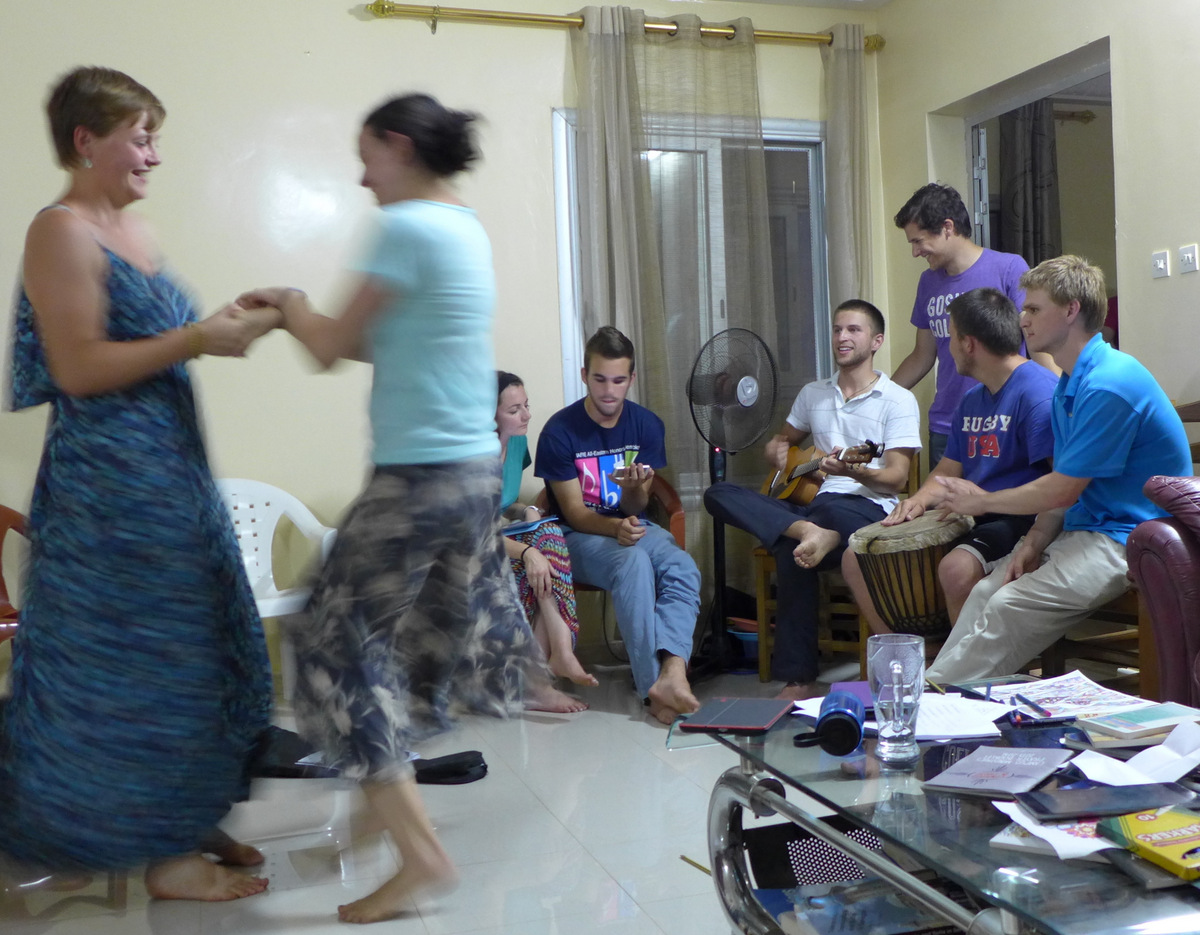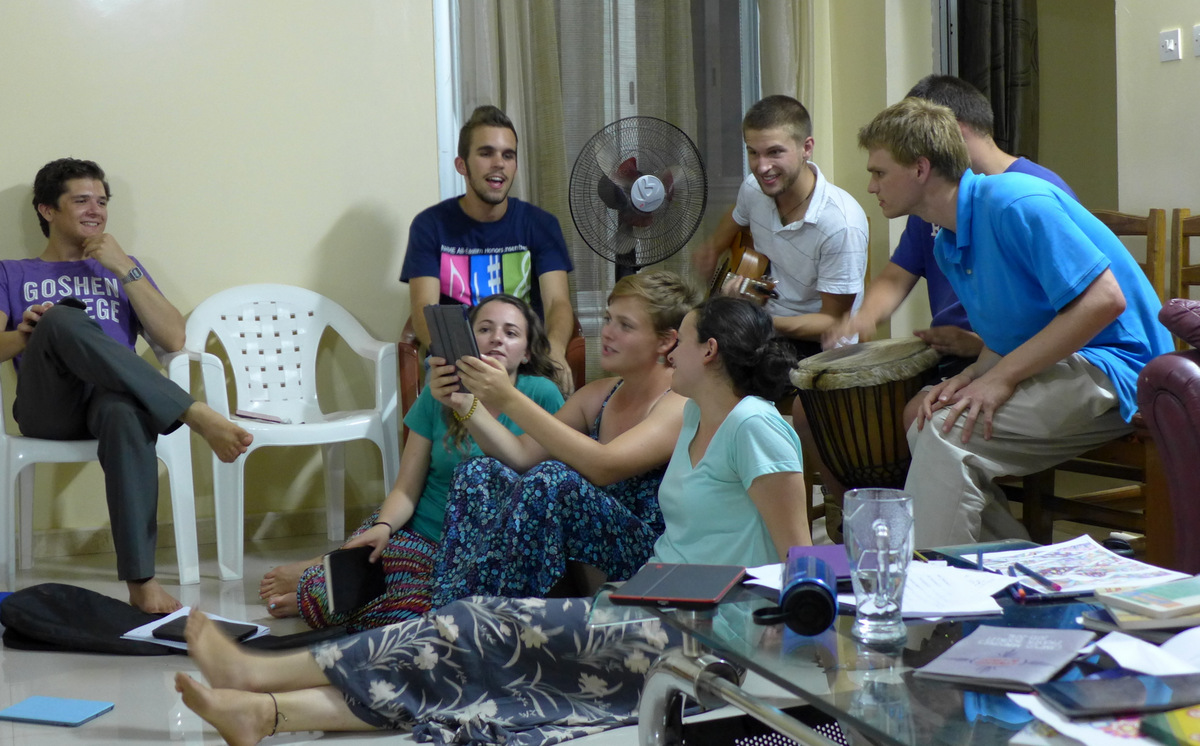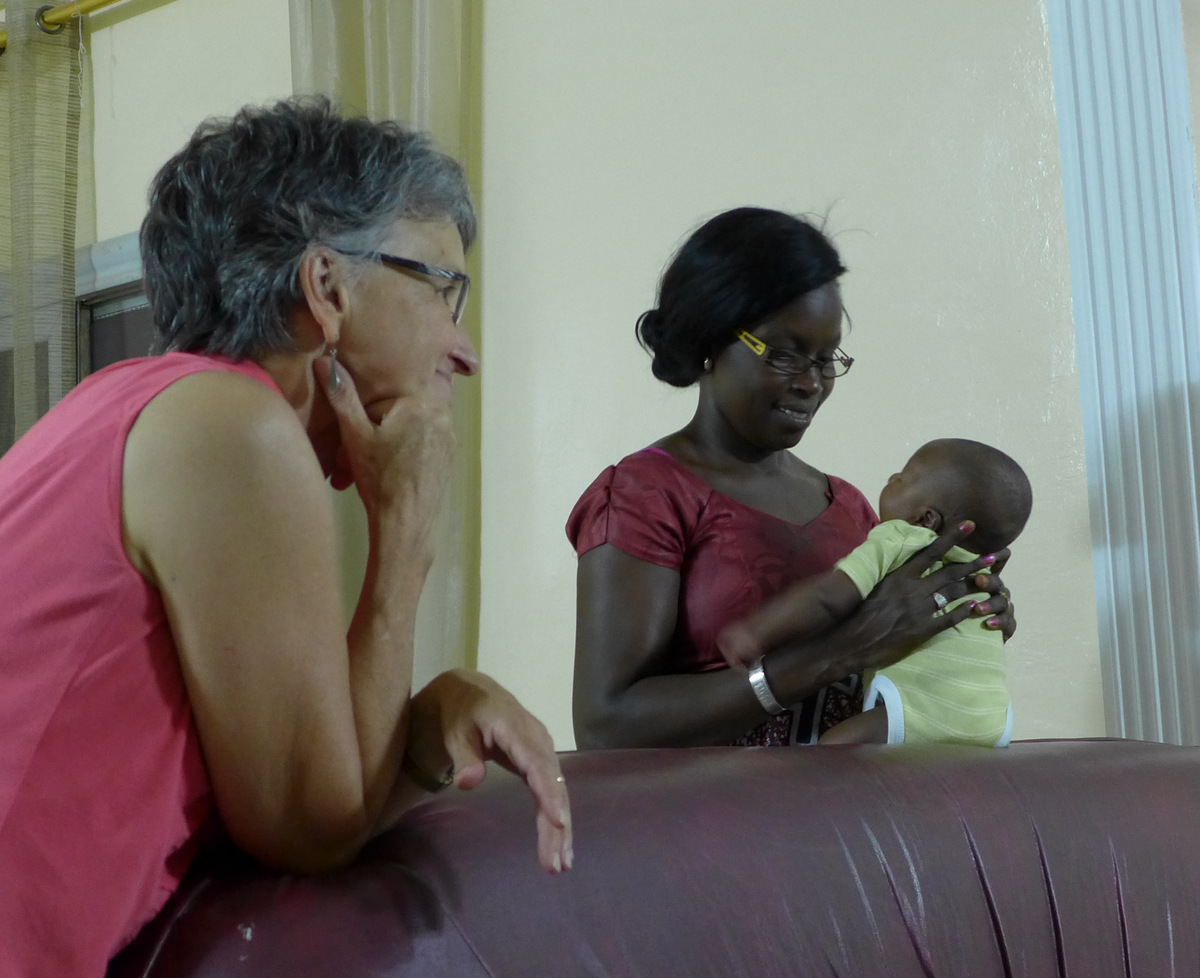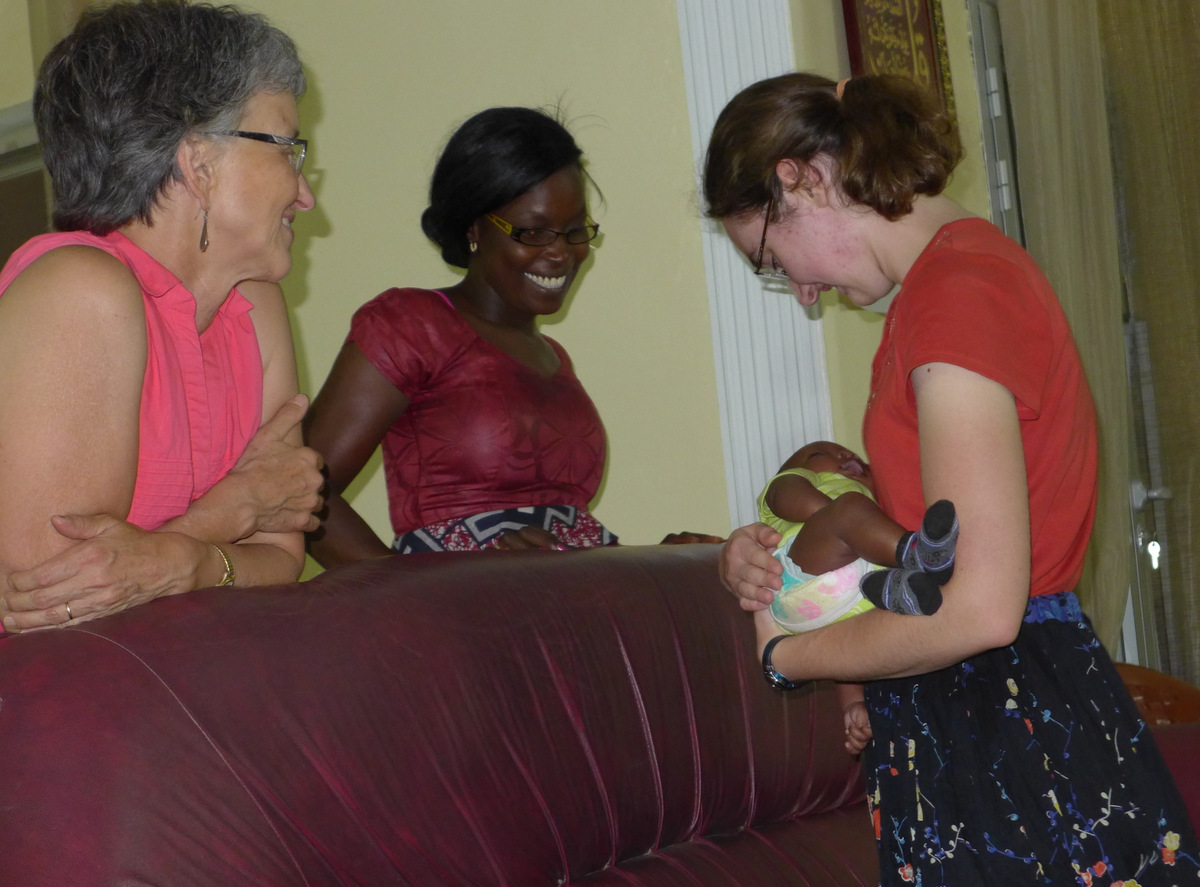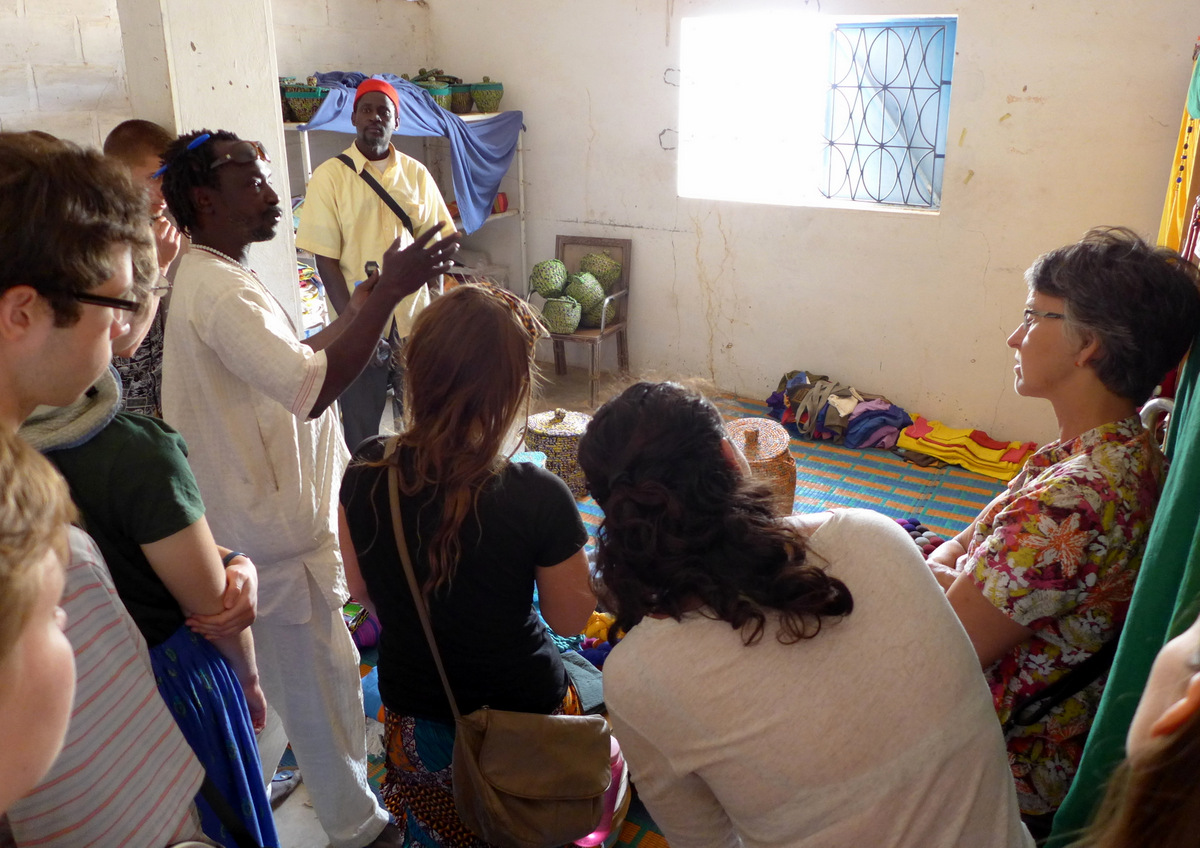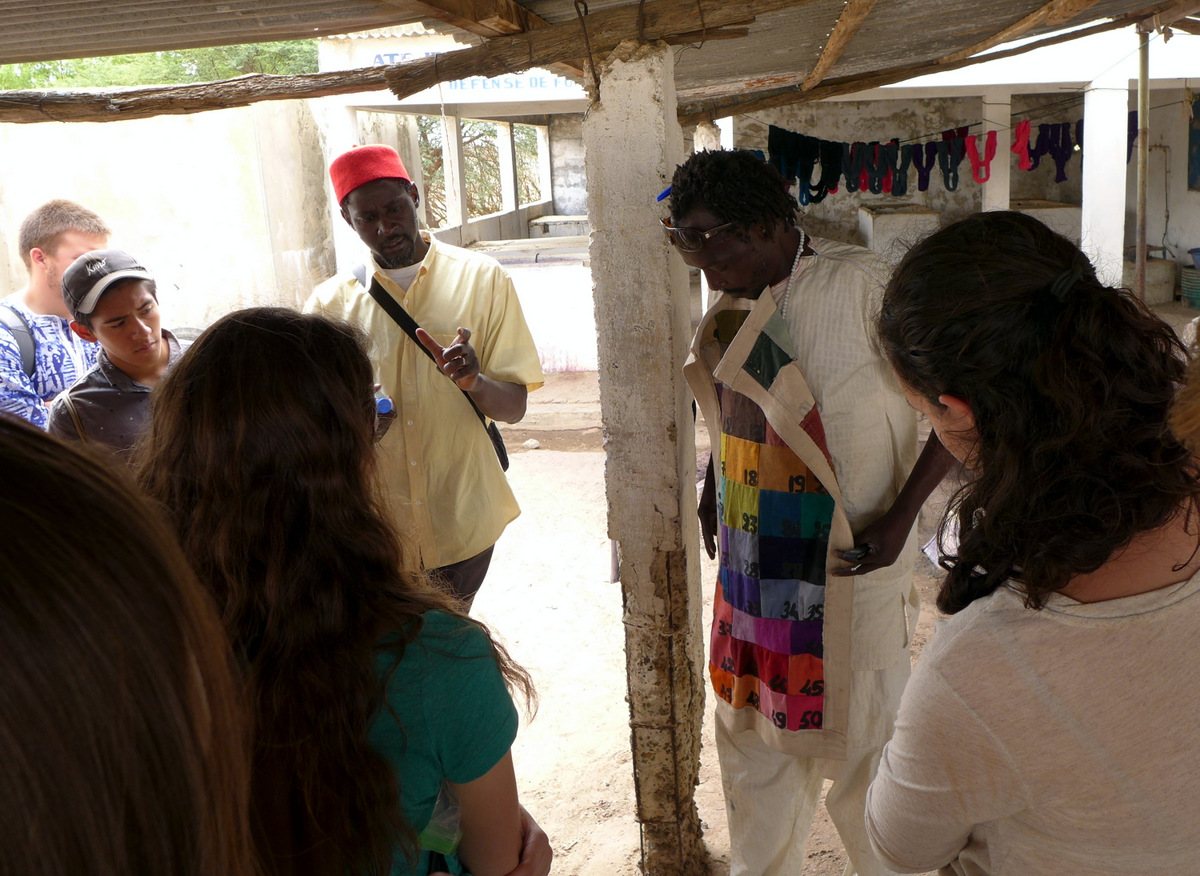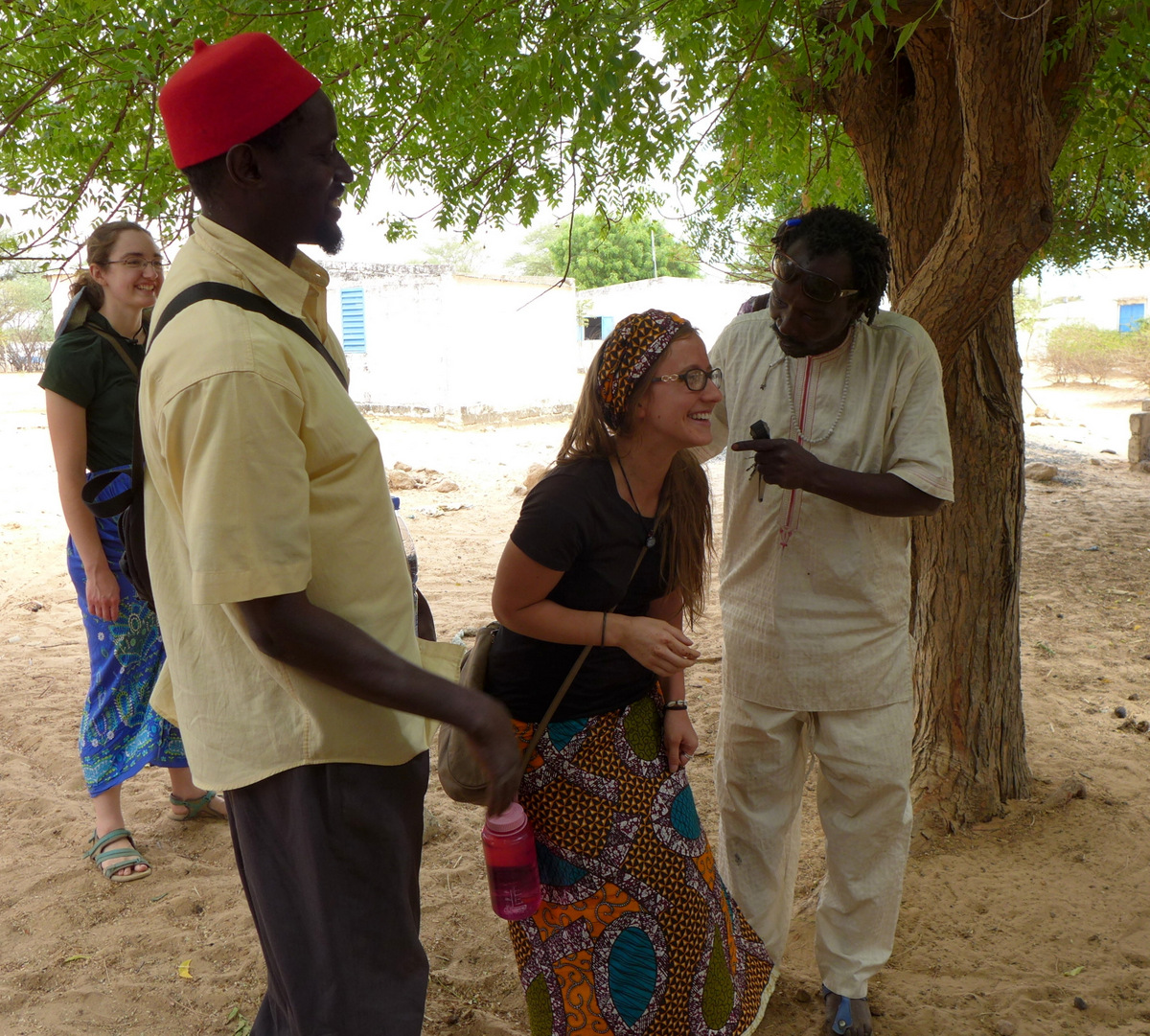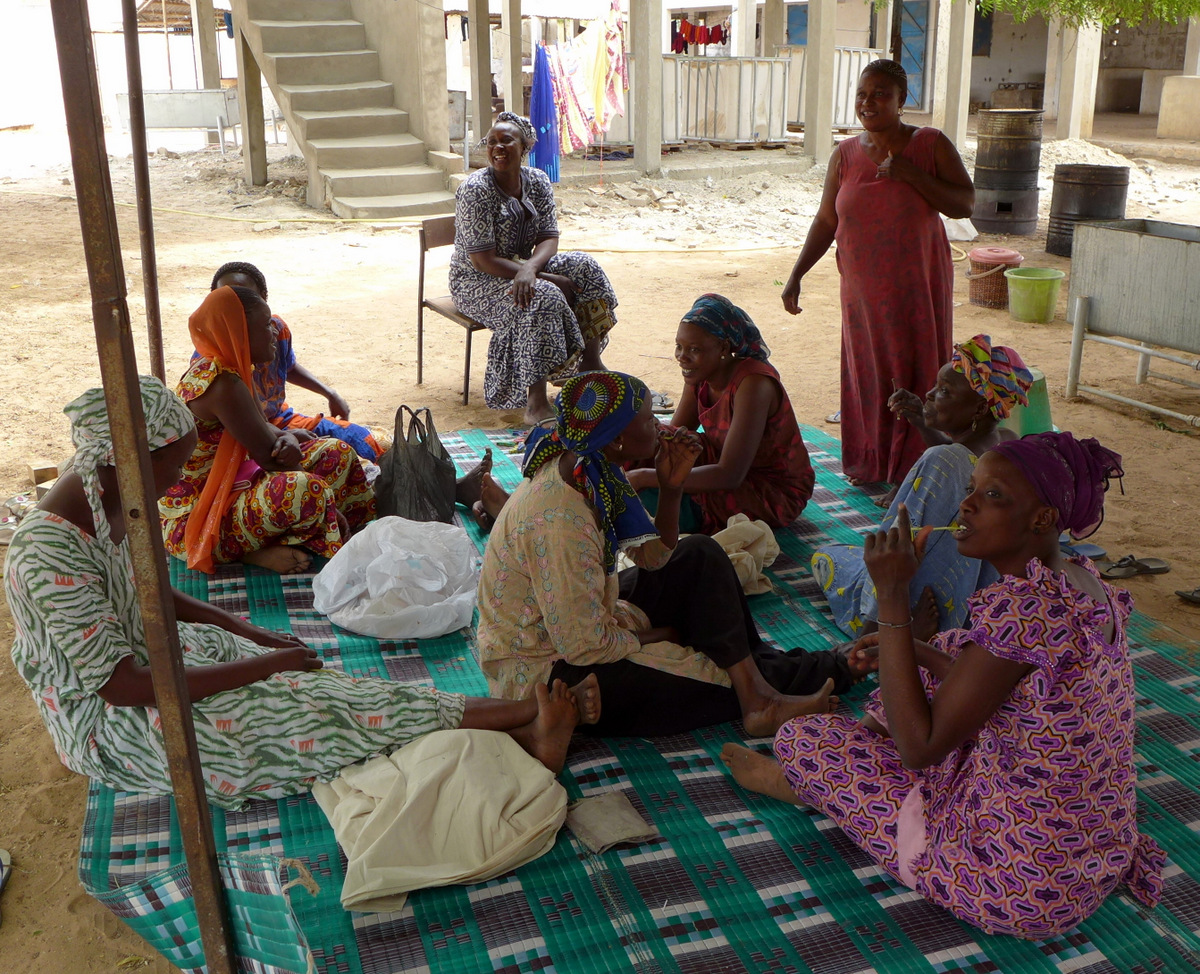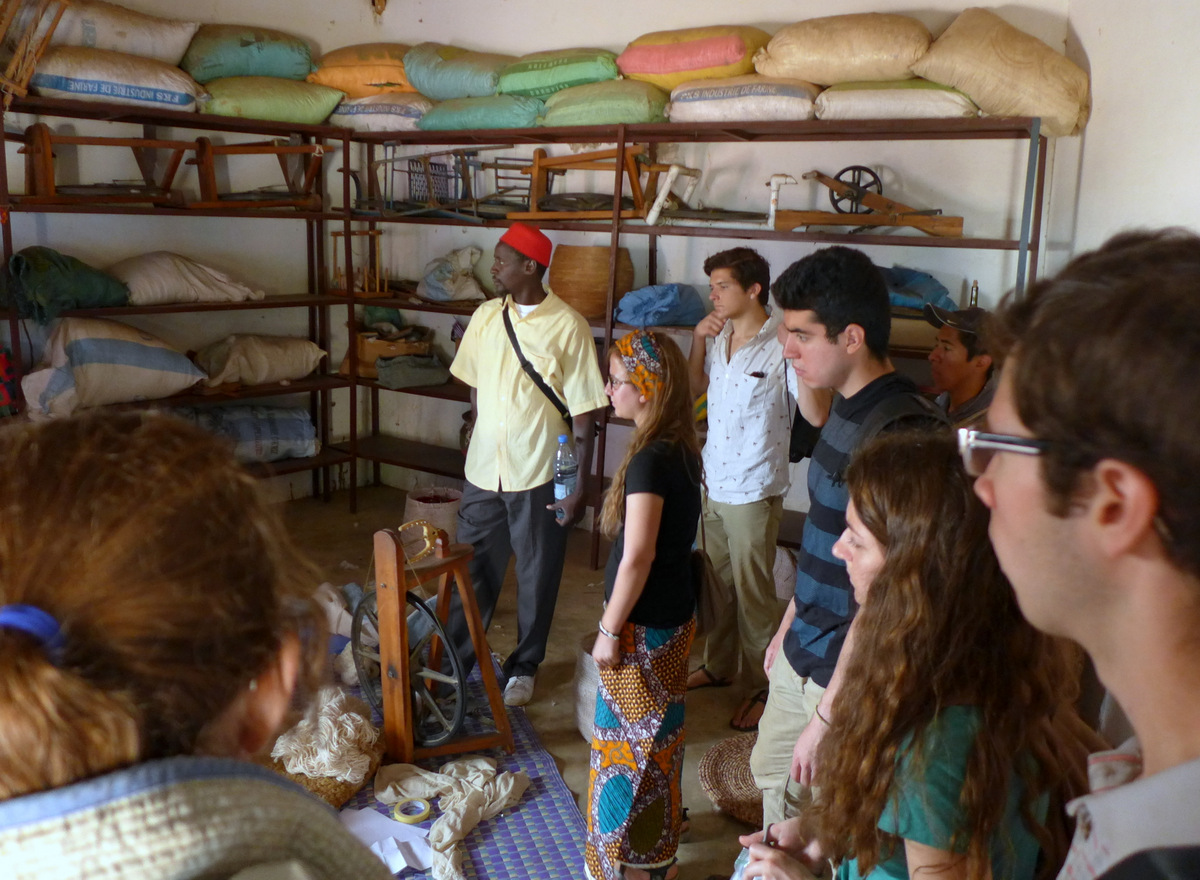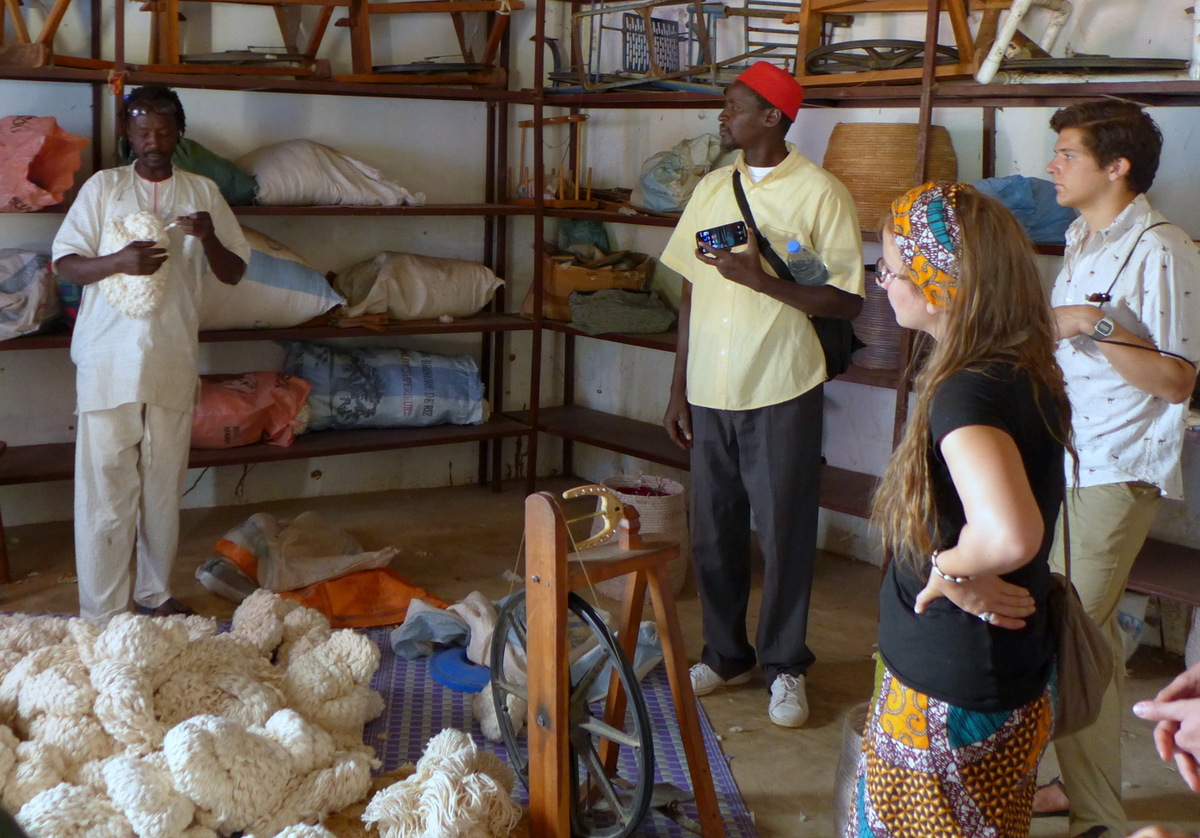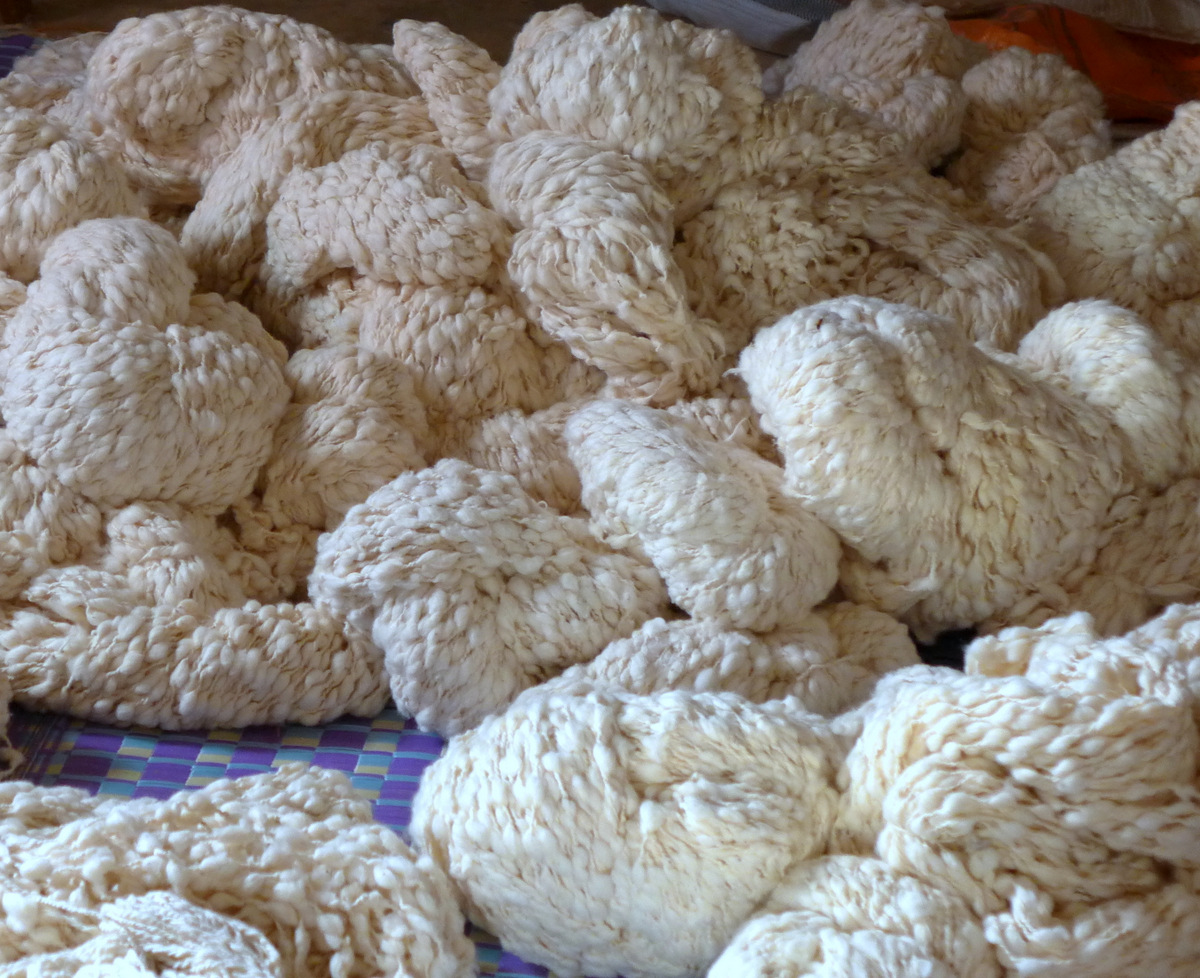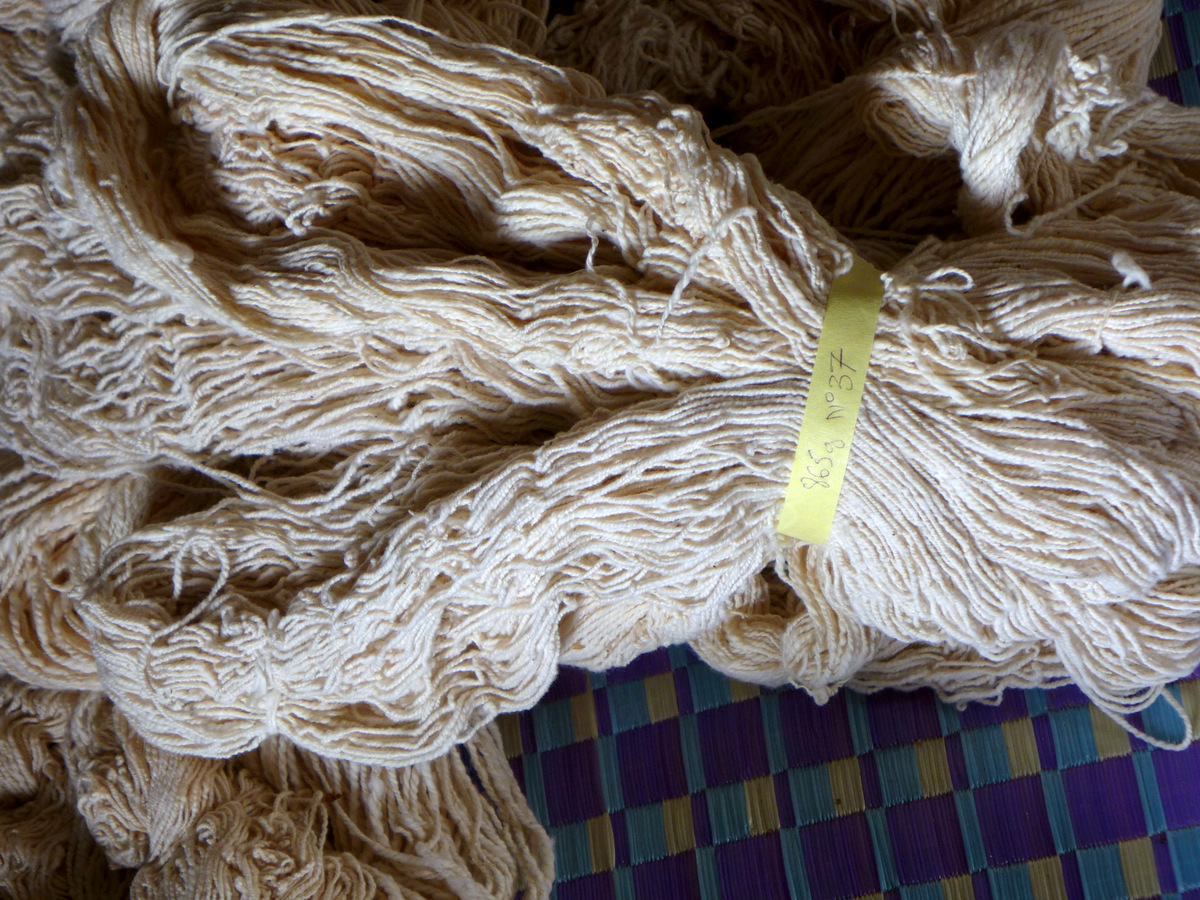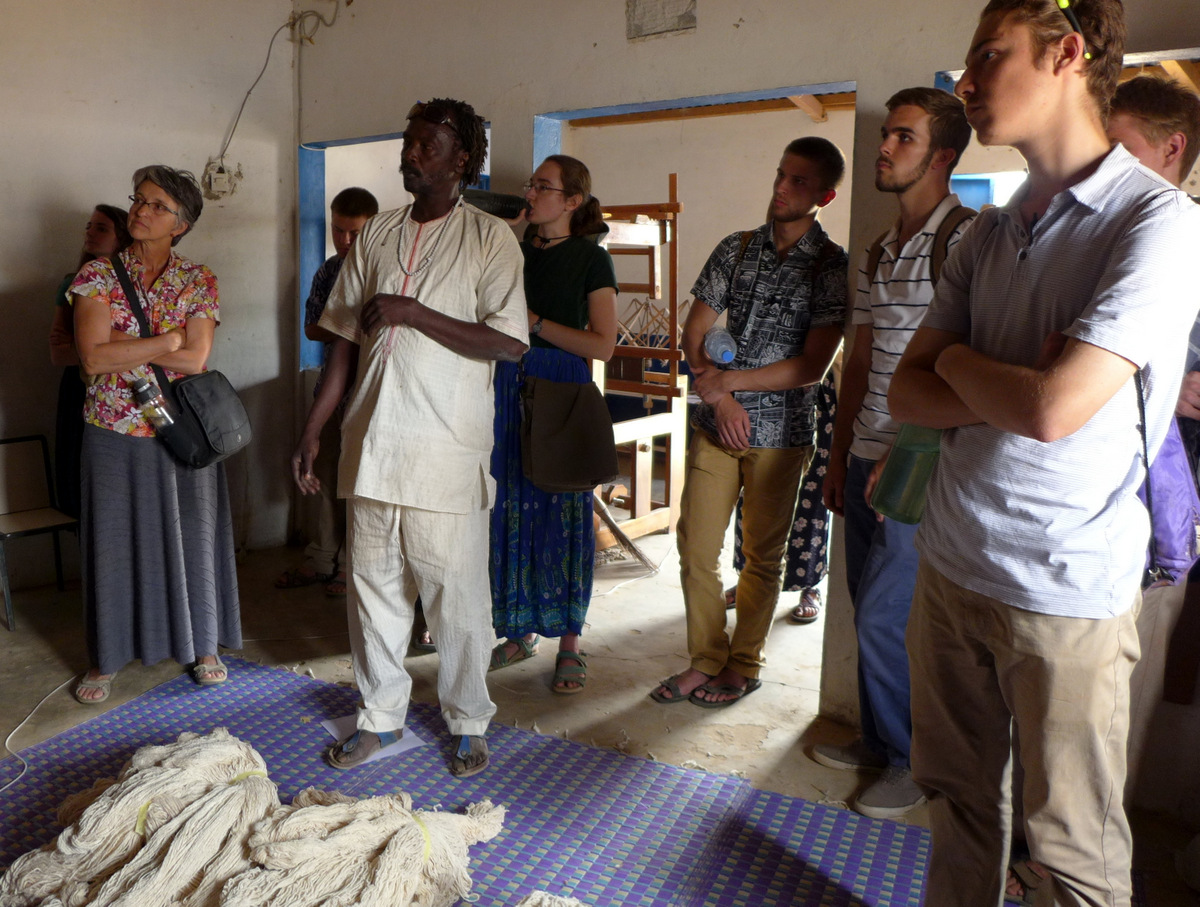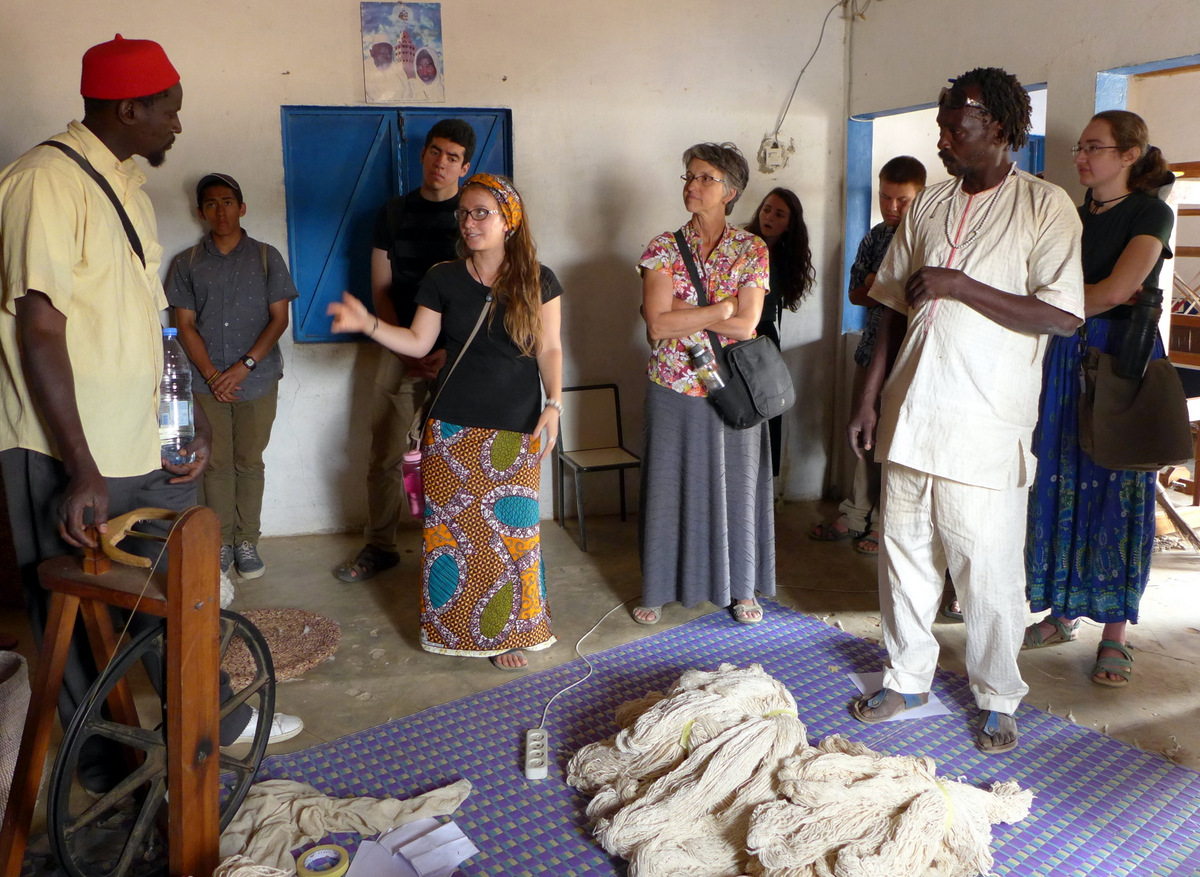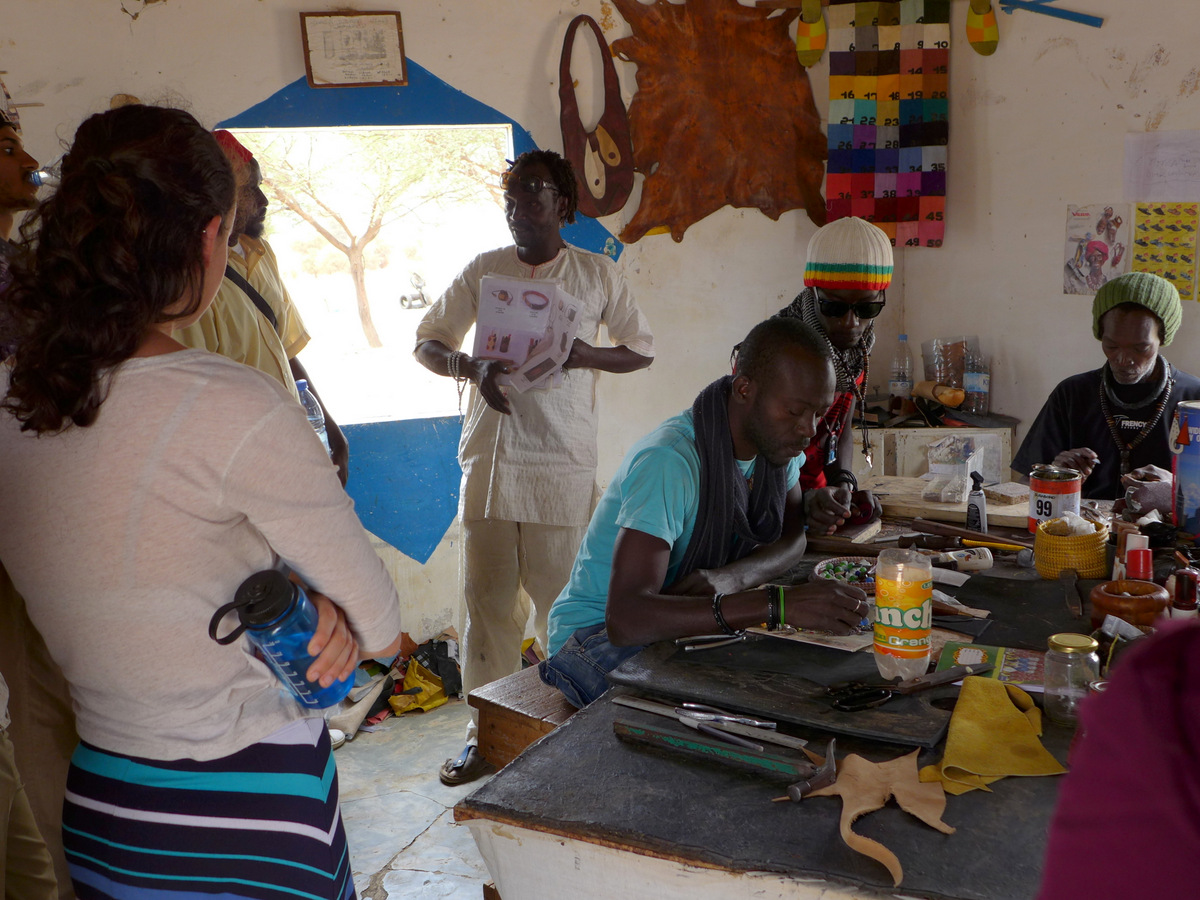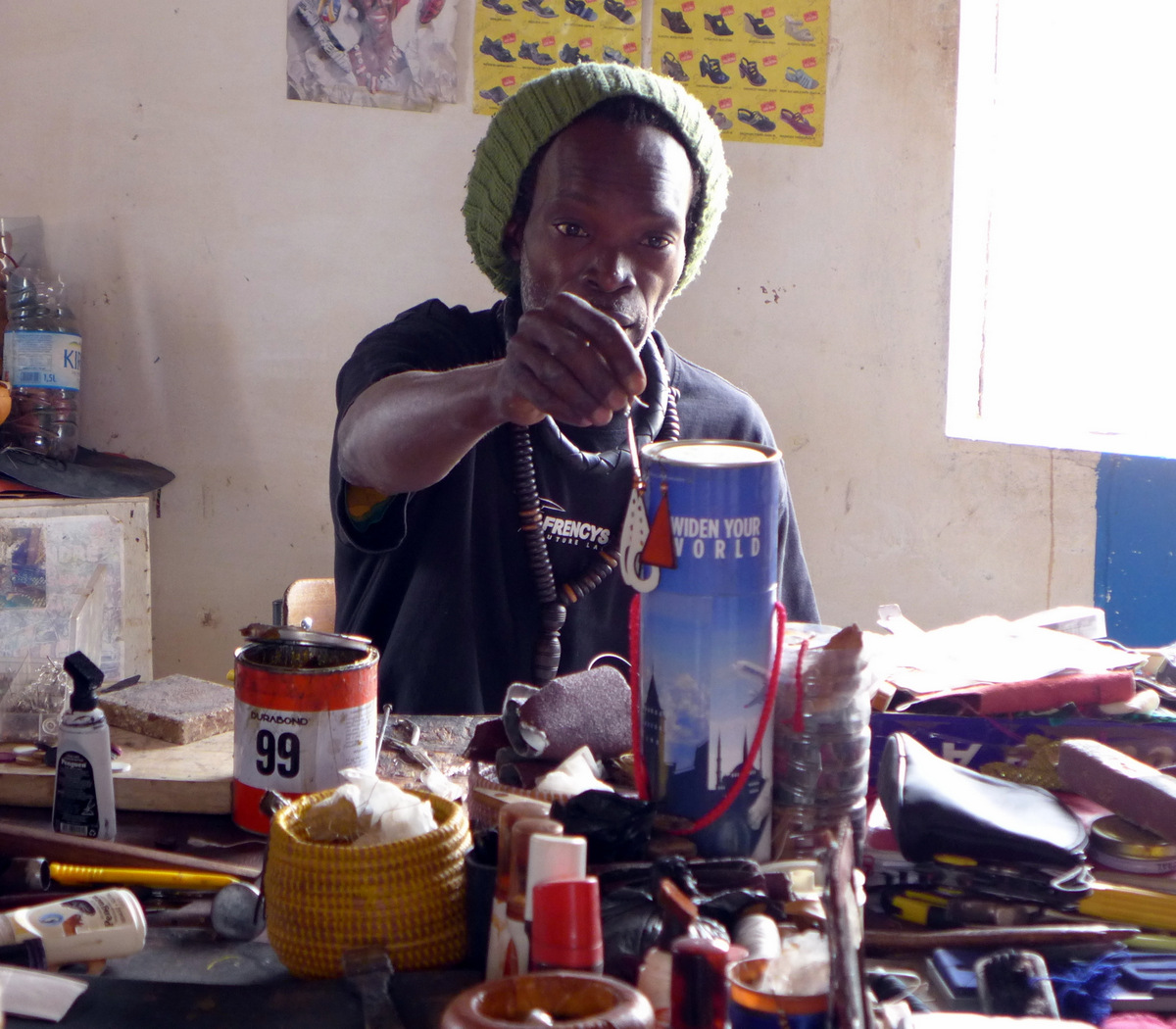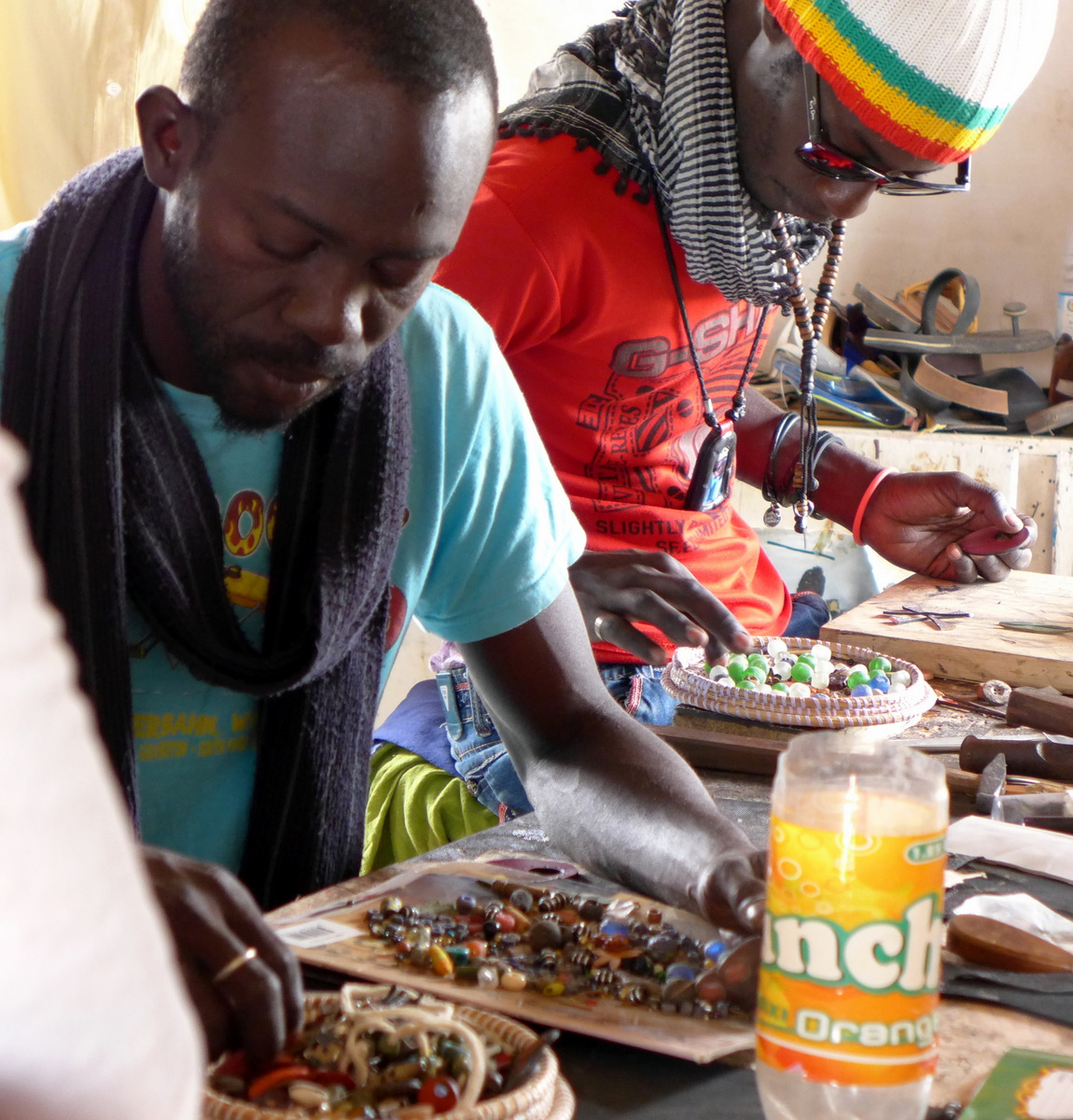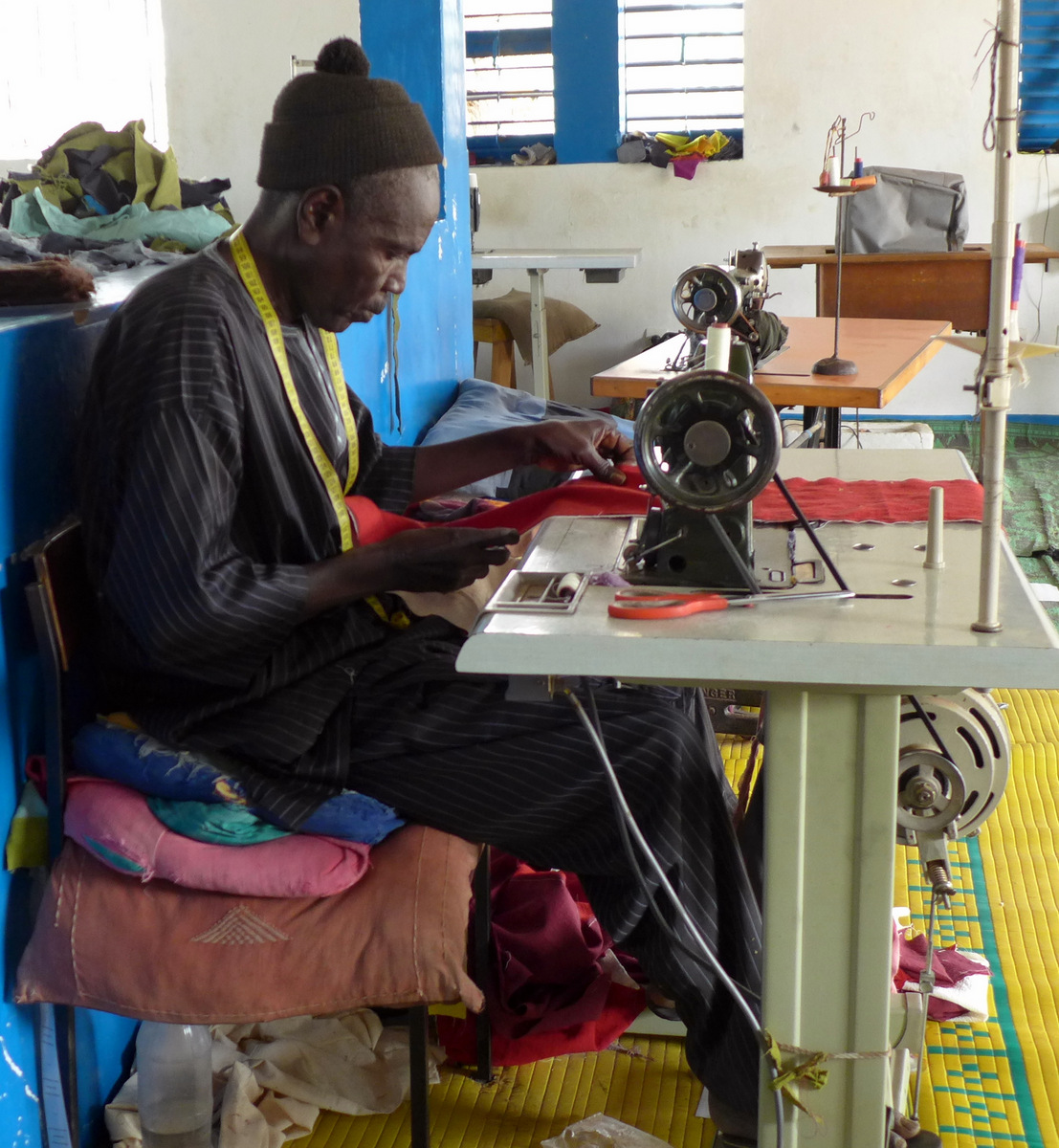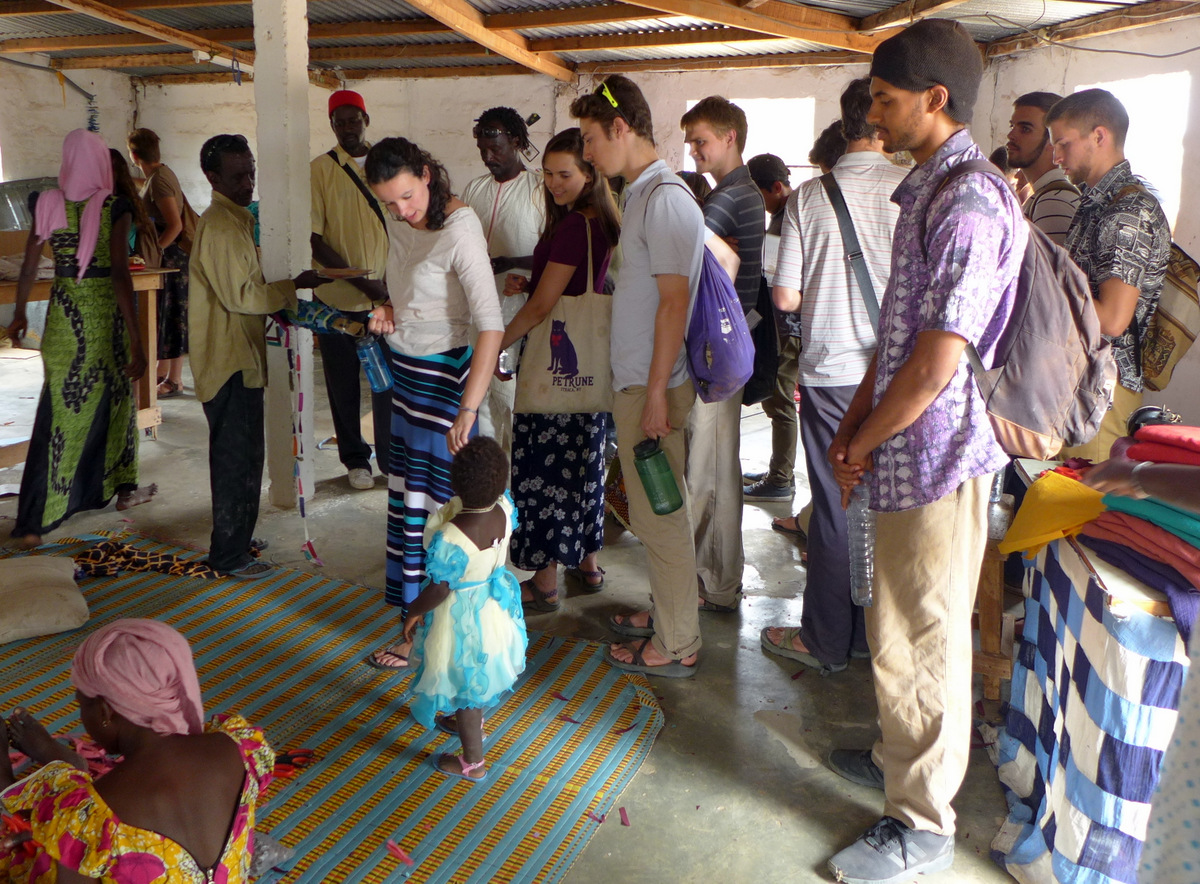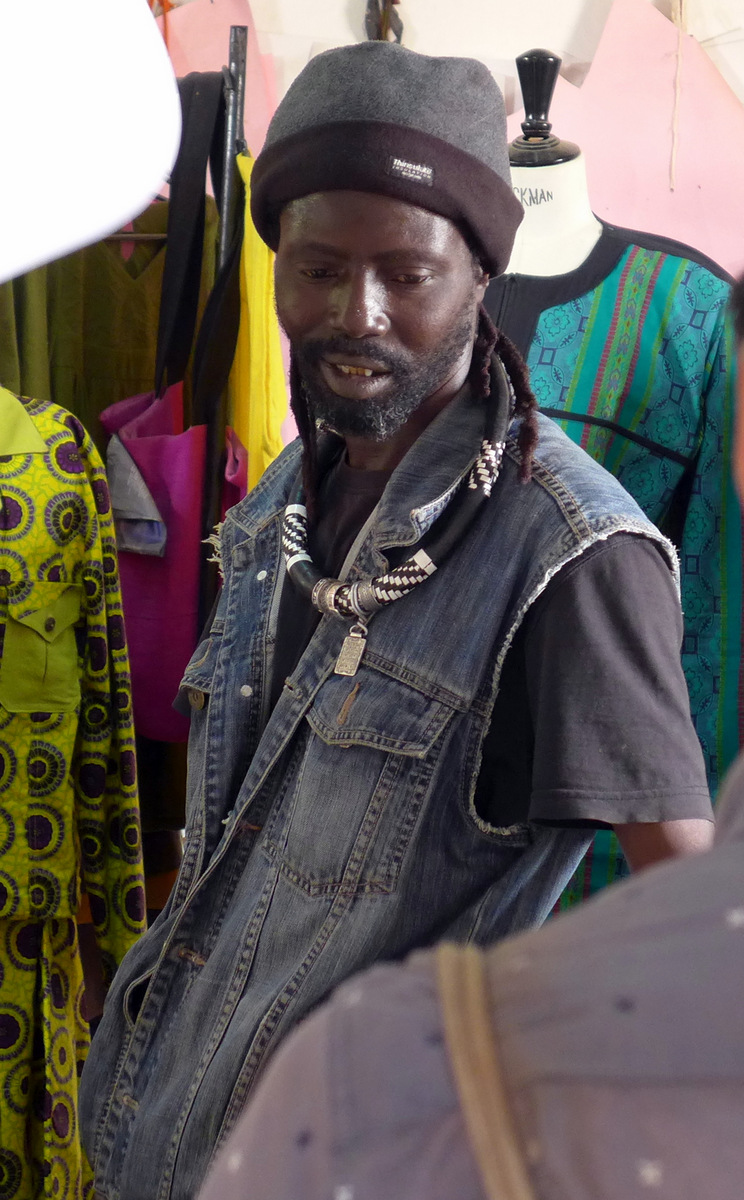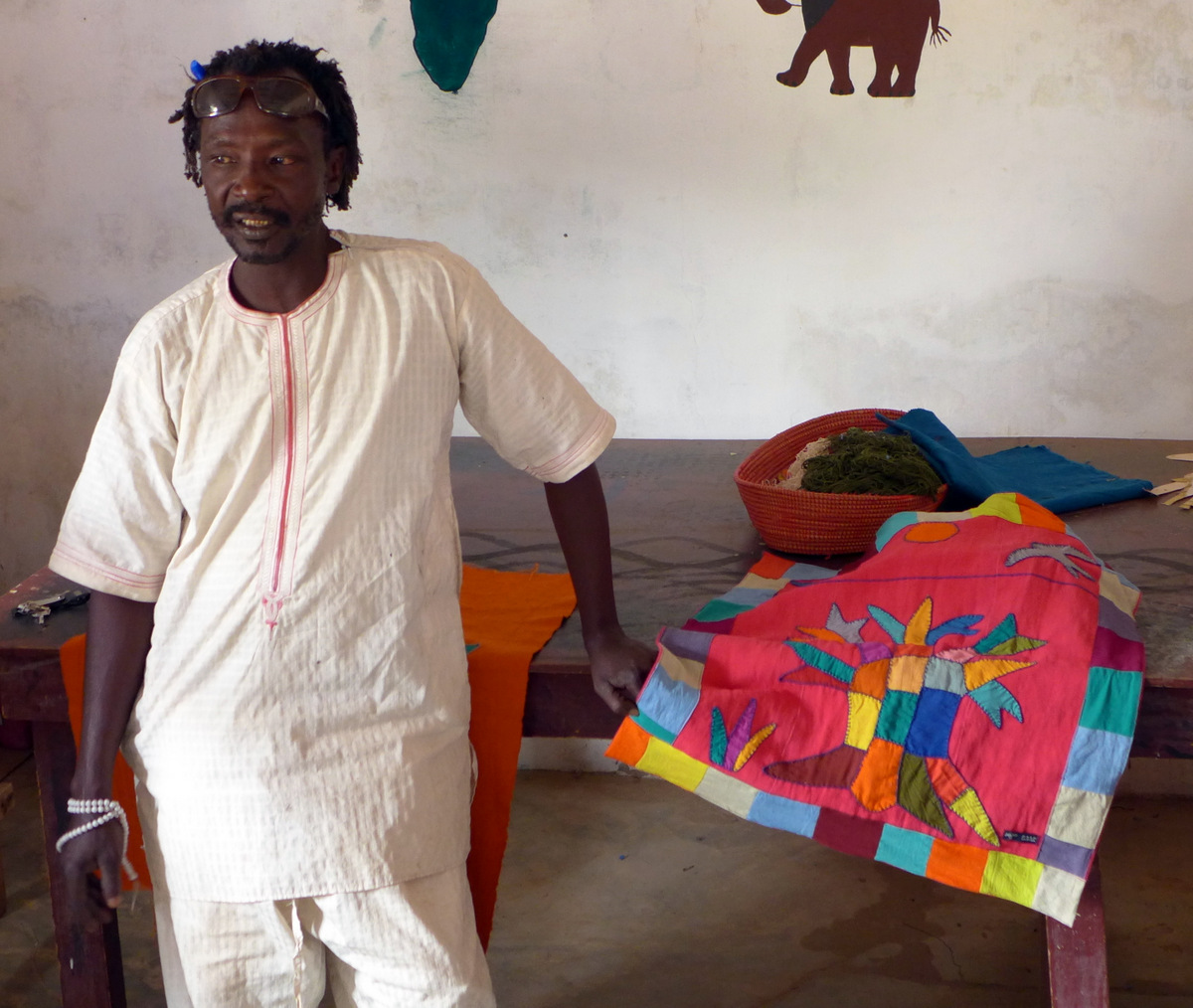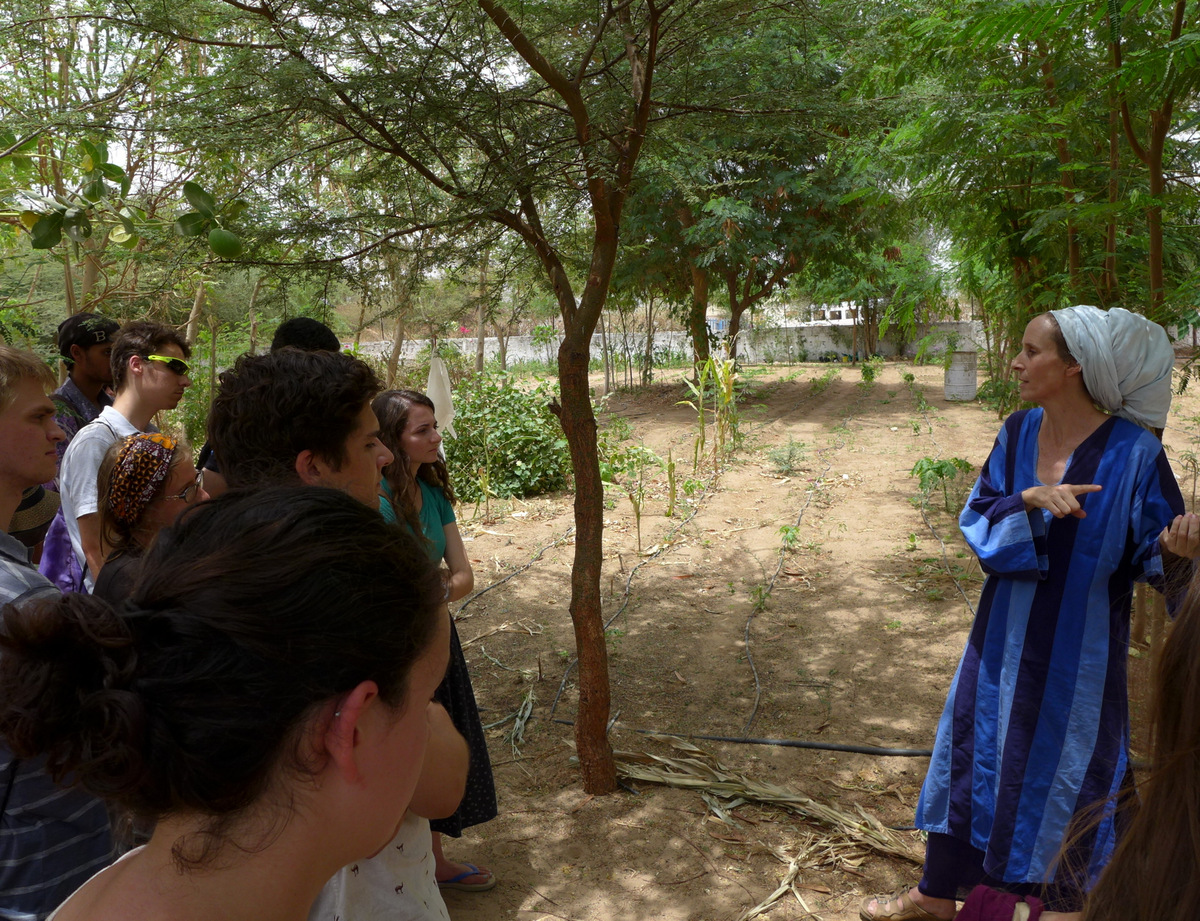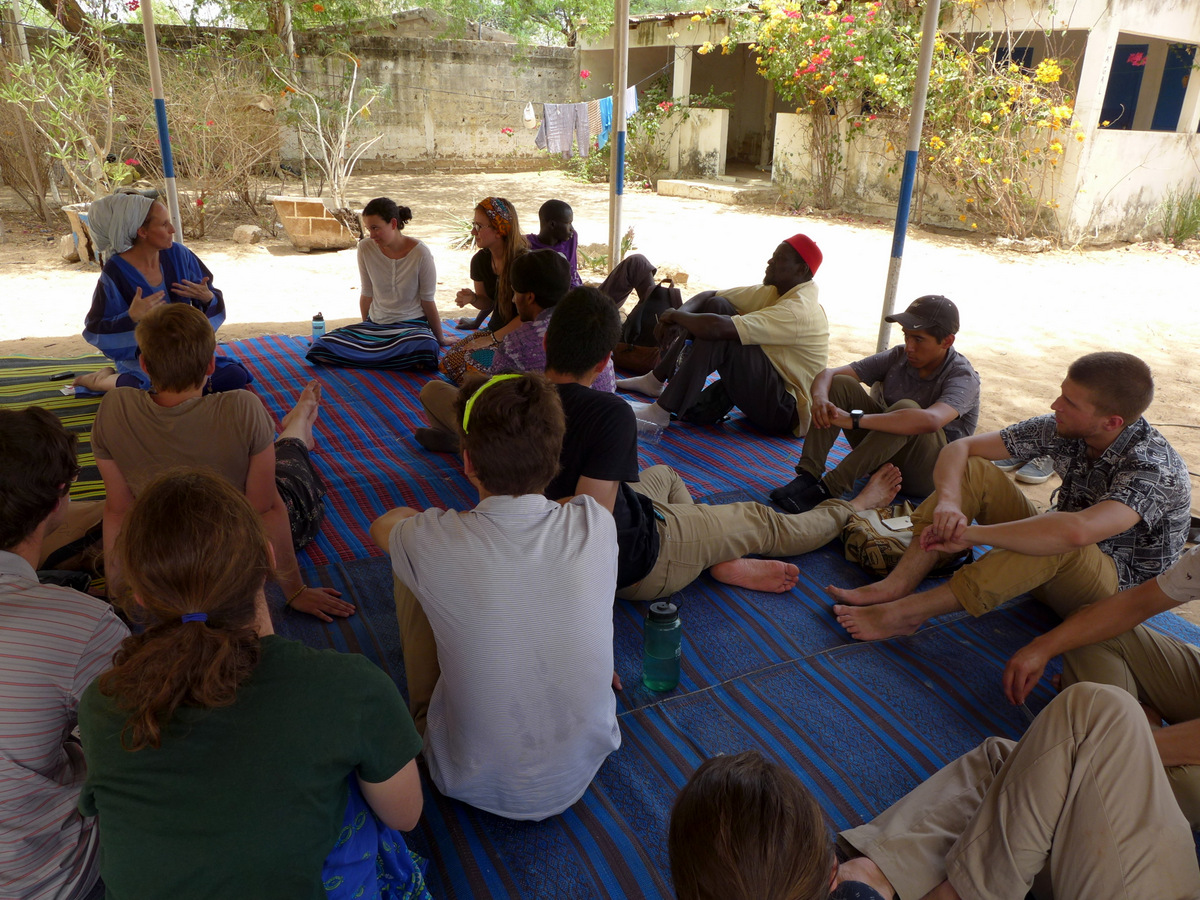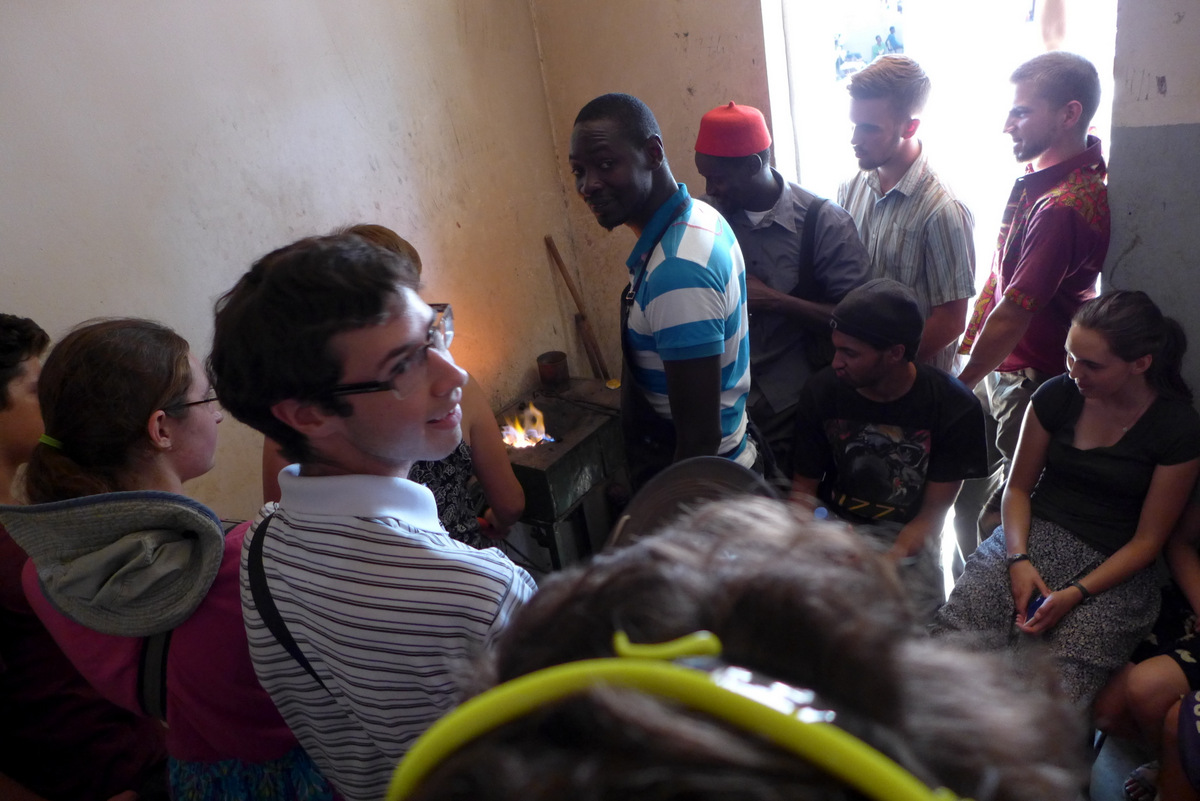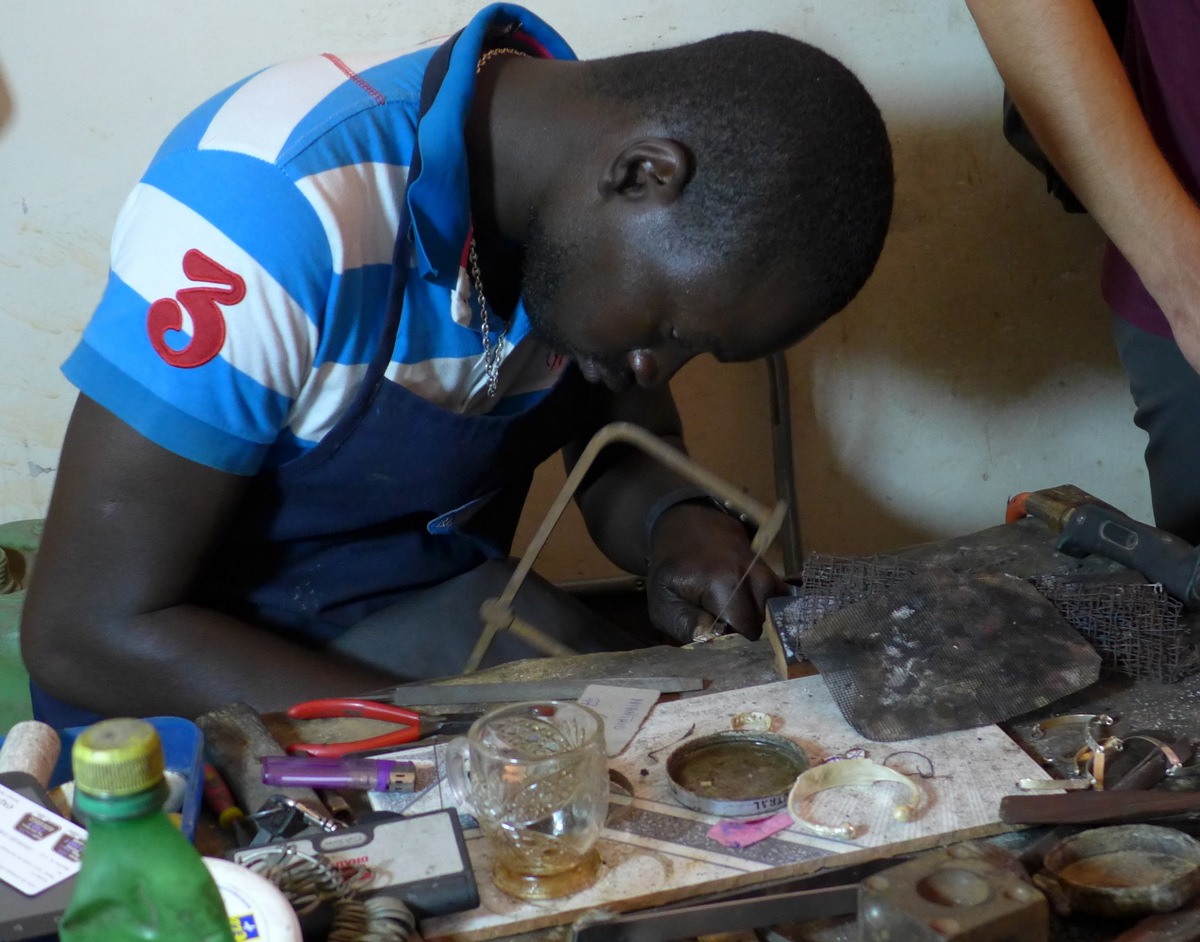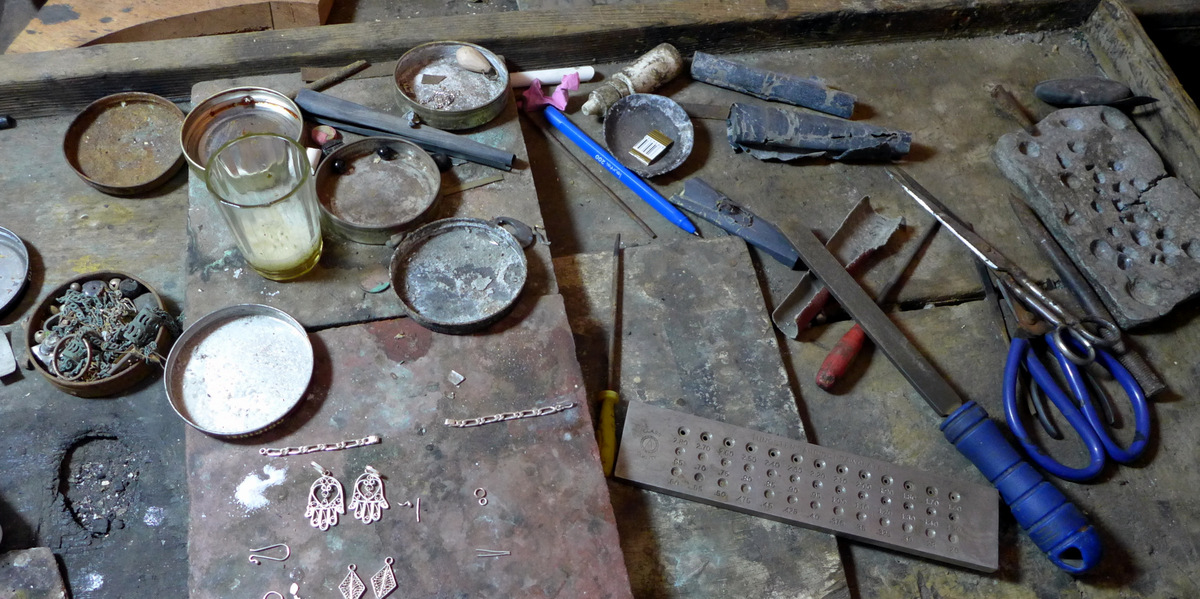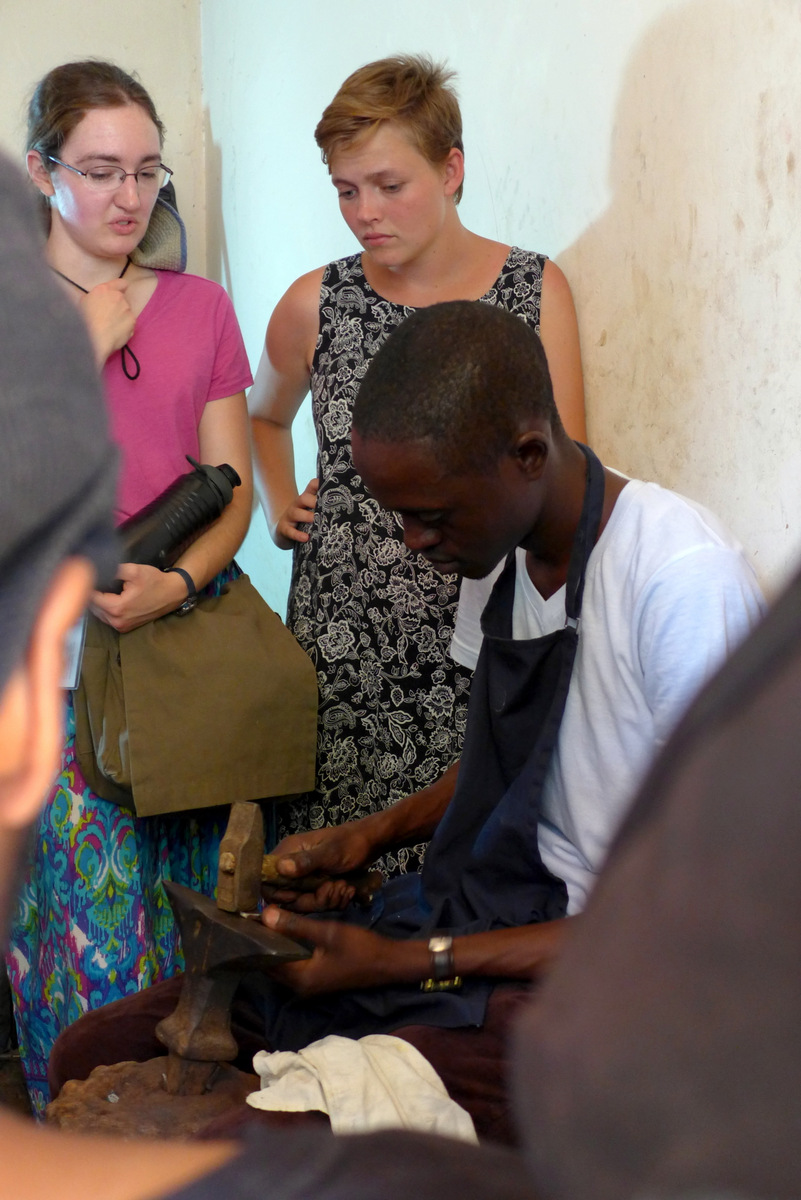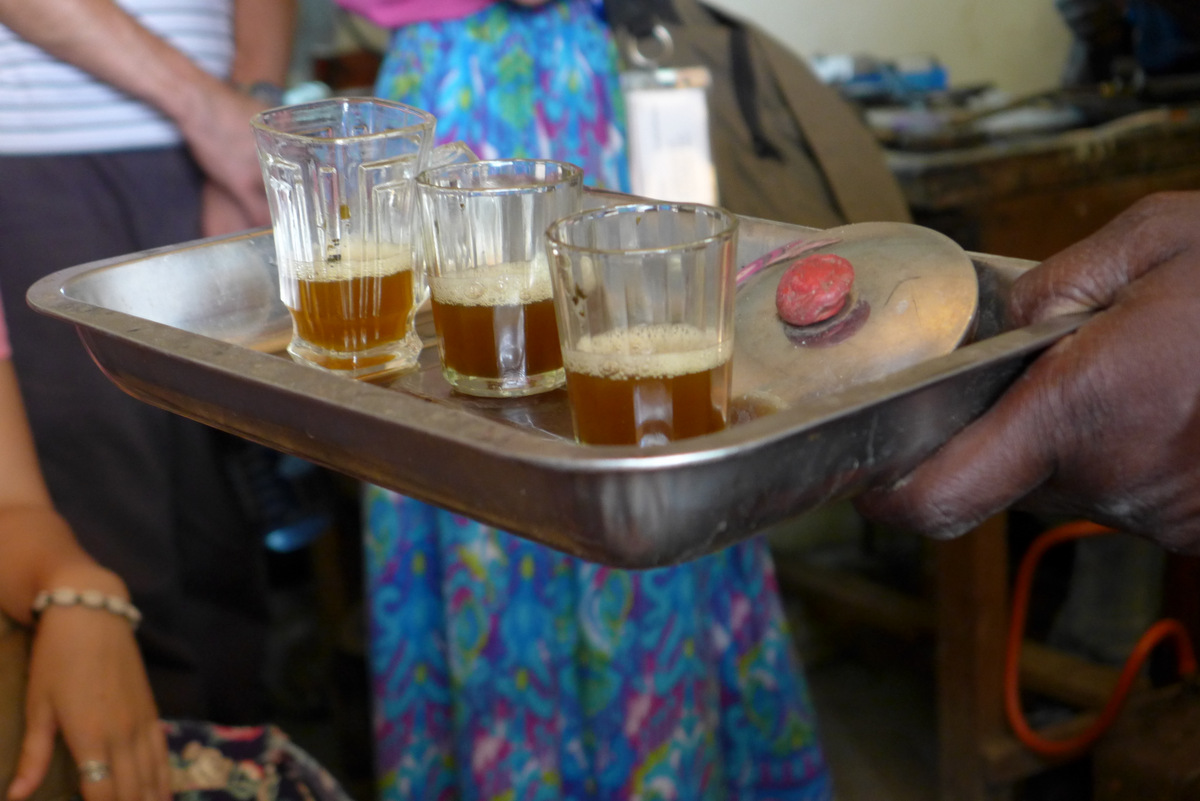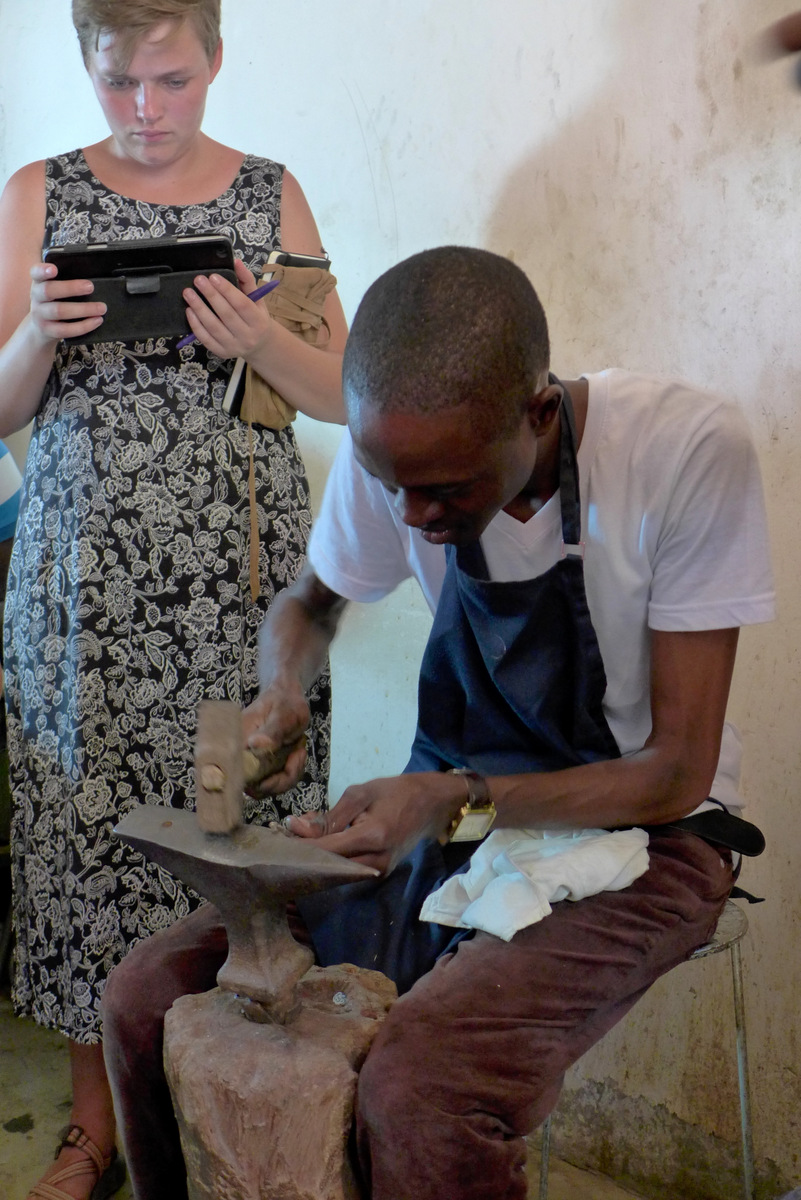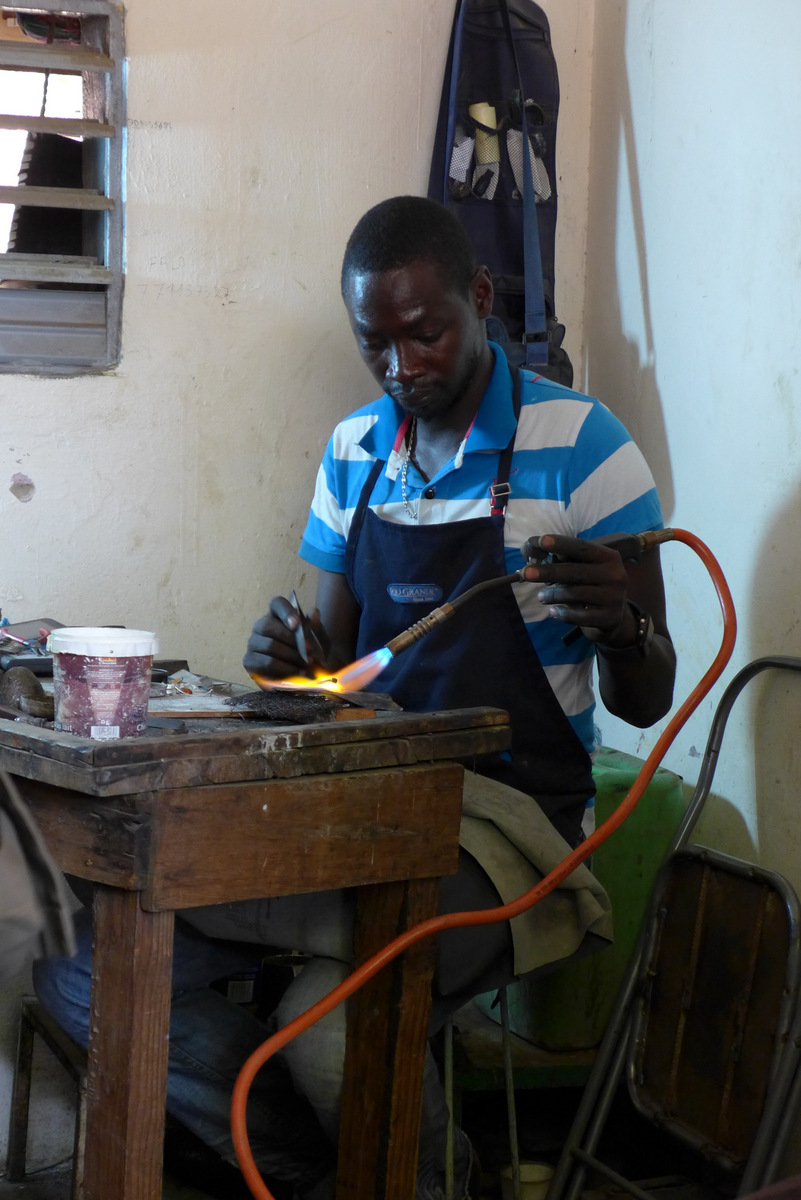Artists in music, cloth, silver … and food.
This next-to-last week in the ‘study’ part of SST continued our look into the role of the arts and artists in Senegal. Norbert — a cousin to Adama — is a singer-songwriter and also works with other musicians recording and mixing their work. Norbert was able to bring together musicians from four genre of music popular in Senegal today for a memorable afternoon of music, dance and discussion. Musicians, even today, often come from “griot” families, the caste group that used to praise the royal families. The musicians talked about how they build on and innovate traditional styles and rhythms from their ethnic and national traditions. Of course many of our students are also excellent musicians and enjoy singing together. Awa created another masterpiece of a meal for us at Chez Goshen this week, and after our discussion, reflection and eating time, guitars and drums came out for some more impromptu singing together.
Our students have been reading Weaving through Islam in Senegal by Laura Cochrane, who talked to weavers about their belief and practice in the nationally supported tapestry workshop at MSAD in Thiés as well as in the rural village of Ndem. We got a chance to visit Ndem on Thursday, where Ellen and Nate will go for service. In order to stem rural outmigration resulting from extensive droughts and decline in agricultural productivity, the leader — a member of the Muslim Baye Fall community — returning from time in Europe in the 1980s started an NGO to create employment and revive traditional crafts. The artisan workshops include spinning, weaving, dying (both natural and synthetic) and tailoring local cotton into elegant clothing and other products that are sold in Europe and the US. (They also create jewelry and leathercraft.) The project is also linked to efforts at providing water, organic gardening and producing alternative fuels in the community.
The students were very impressed with the beautiful broad loom tapestries produced at MSAD and had a great opportunity to talk to the artists there. Unfortunately we were not able to take photos.
Friday afternoon we met at the Village Artisanal in Thiés where a young artist named Ousman Tall invited us into his tiny silversmithing shop to show us some of his craft. The forge was fired up, he melted down a hunk of silver, then carefully pounded, stretched, filed and polished until a beautiful little bracelet was created. All the while he patiently answered myriad questions about where he learned to work silver (from his grandfather), the economics of being a jewelry artist, the influence of Islam on his art, and his hopes and dreams for the future. And even managed to serve us all tea (the forge was already hot after all)! When he was finished, everyone fanned out to visit the many other artists in the village — more jewelers, leather workers, shoe makers, wood carvers, basket makers, potters, metal workers — and to talk to them, too, about their lives and their art.
This is their last weekend with their host families in Thiés. Next week we will wrap up the language classes, field trips, lectures and study part of SST. Everyone is excited about the new places, people and experiences that await them on their service assignments. (They will leave for service next weekend.) During the reflection this week at Chez Goshen Nate invited everyone to share something they will miss about being in Thiés. There were many lovely stories often revolving around the remarkable relationships that students have with their host brothers and sisters and parents even as they have worked through language and cultural obstacles. Six weeks has sometimes felt like a long time, but now feels very short. It is a good place to be: hard to leave behind people you have grown to love, but excited to move on to the next thing.
